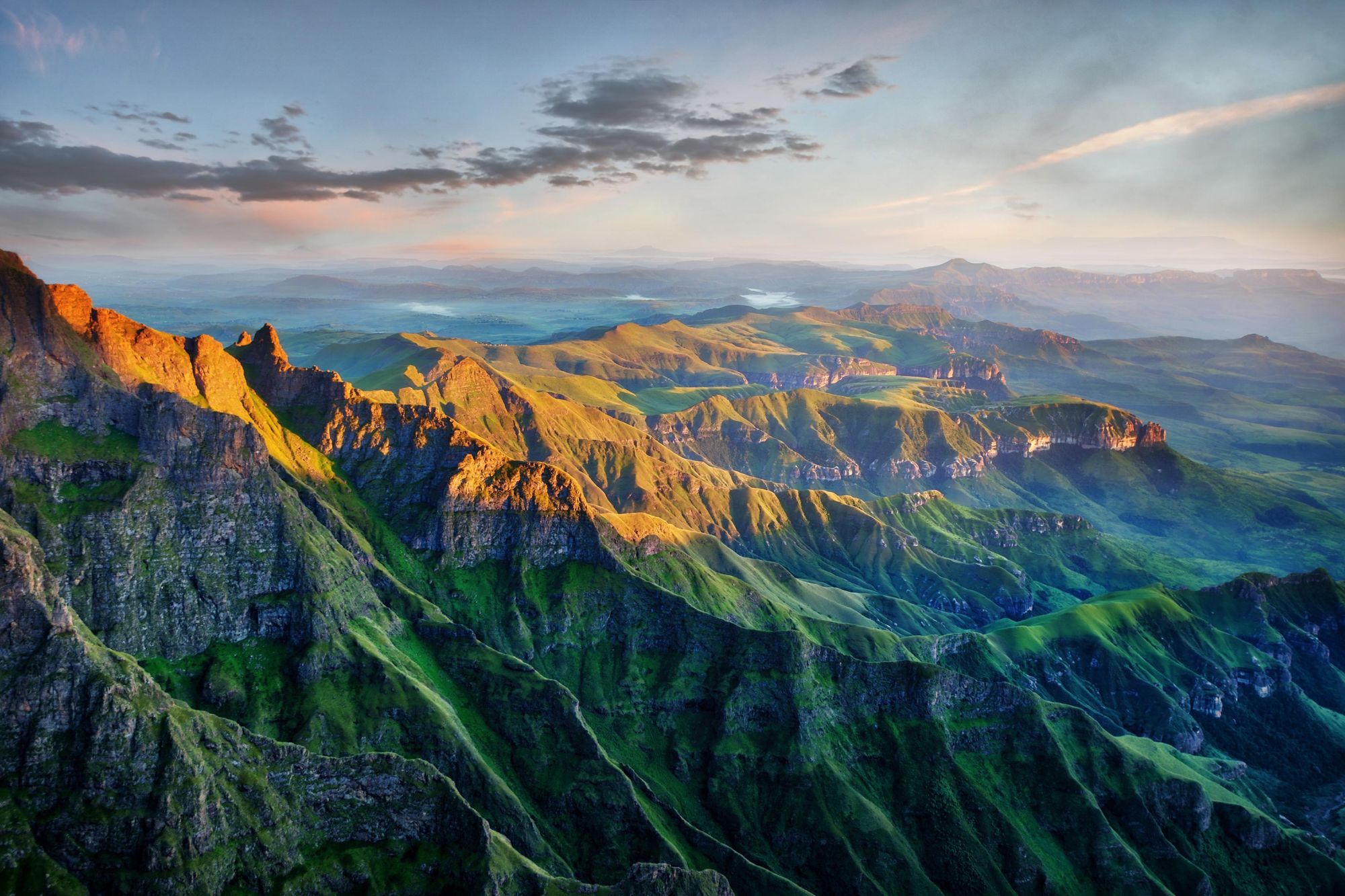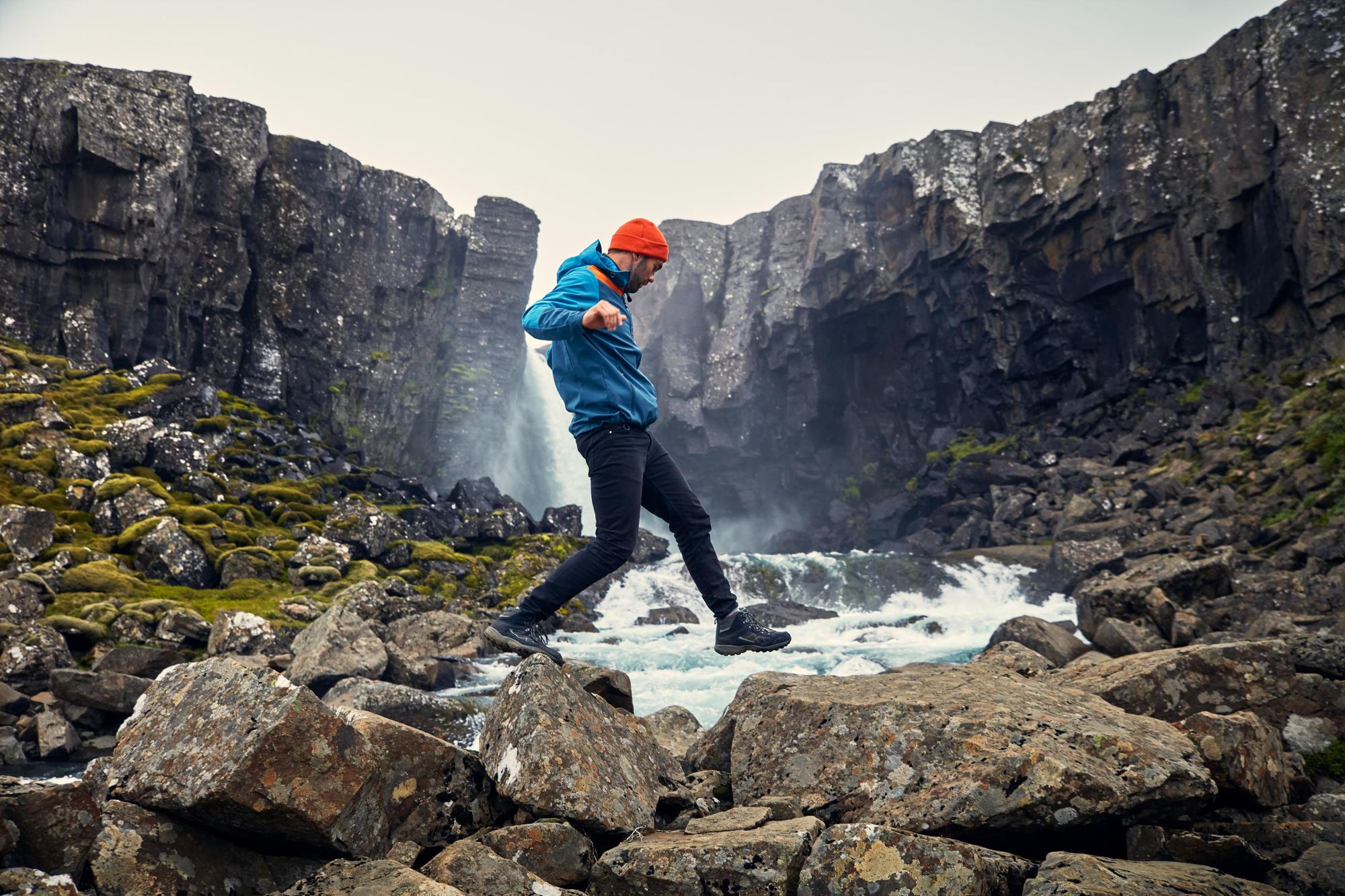
May is shoulder season and one of the best months to travel. Europe is on the cusp of summer and in the hold of spring. Birdsong sounds in the forest of Romania, hiking trails are lined with daffodils and hellebores in the Alps and the snow has melted from all but the highest summits. Elsewhere in the world, it’s autumn. The foothills of Patagonia and the Drakensberg mountains of South Africa are turning auburn, amber and orange. And the days are long enough for adventure - albeit with the odd bit of rain here and there - and temperatures ideal for hiking.
The main reason we love travelling in May, though, is that the crowds that come during the summer - which start to ramp up in June, and heighten through July and August - aren’t present in May, meaning that there’s less tourism pressure on towns which see a lot of footfall during peak season.
Birdsong sounds in the forest of Romania, hiking trails are lined with daffodils and hellebores in the Alps...
“There are fewer visitors, so you have the area to yourself,” says Ricardo Fahrig, an Albanian destination expert, speaking about the coastal regions of Albania during the off-season. “There’s less waiting time. There is lower pricing. I think you get a much more authentic insight because you won’t just meet foreign visitors, you’re going to meet a lot more locals too.”
This statement stands is just as true for most travel destinations as it is for the Albanian Riviera.

Generally speaking, May is a cracking month for global travel, regardless of where you travel to (and especially if you own a half-decent waterproof jacket). Here, we’ve picked out 20 outstanding destinations which demonstrate why. But if you don’t see your favourite on the list, don’t panic too much. There’s a pretty high chance that it wears the month of May well too.
Here’s our guide to the best travel destinations in May - a month of excitement for travellers.
1. Picos de Europa, Spain
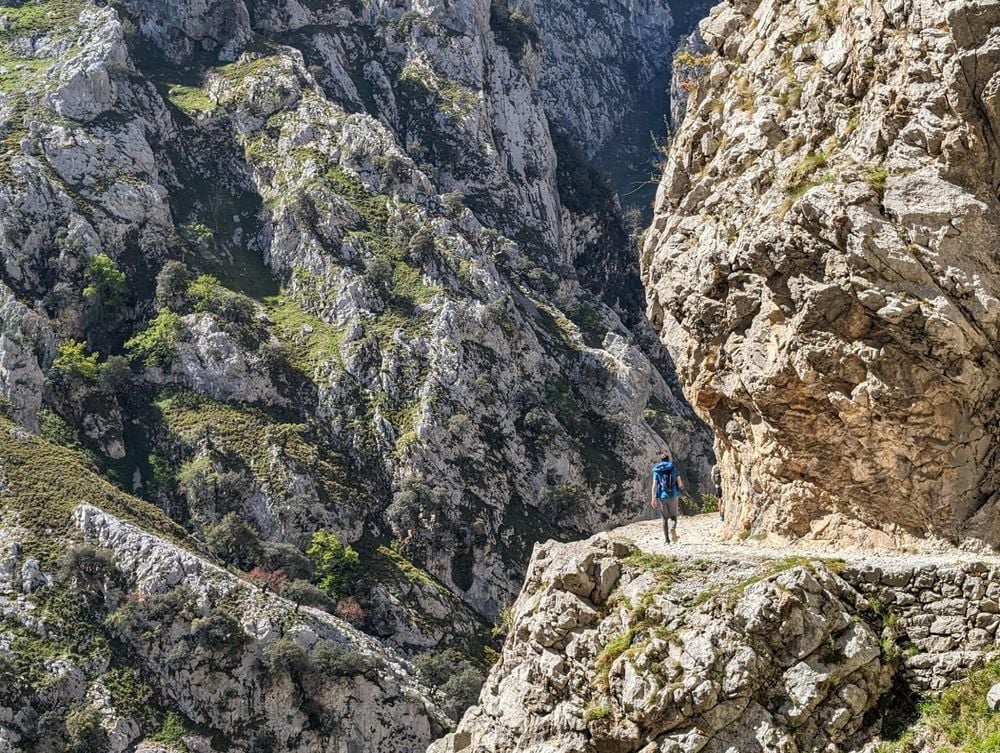
- Season: Spring
- Temperature: 19°C high, 11ºC low
- Time zone: GMT+2
- Currency: Euro
- Best for: A lesser known side to Spain
The Picos de Europa is a small but mighty mountain range in the north of Spain. It's long been popular with rock climbers but in recent years, this beautiful range - which combines high mountains and coastal beauty - has gained acclaim with adventurers of all sort. It's a place where you can go hiking in the morning and canoeing in the evening. It's a place where you can canyon while vultures circle above, and paddleboard on ocean waves, still in sight of the mountain tops.
Visit the Picos in May and you’ll find that the weather remains decent (though the north of Spain is rainier and chillier than the south). There’s still plenty of daylight and crucially, the place is a lot less busy than in summer. Even the most popular trails, like the famous Ruta del Cares, are really only populated by locals.
How to get there? The Picos de Europa are served by various airports. Santander and Asturias Airport are around a 90-minute drive from the Picos de Europa. Bilbao Airport is an hour further.

2. Sardinia, Italy
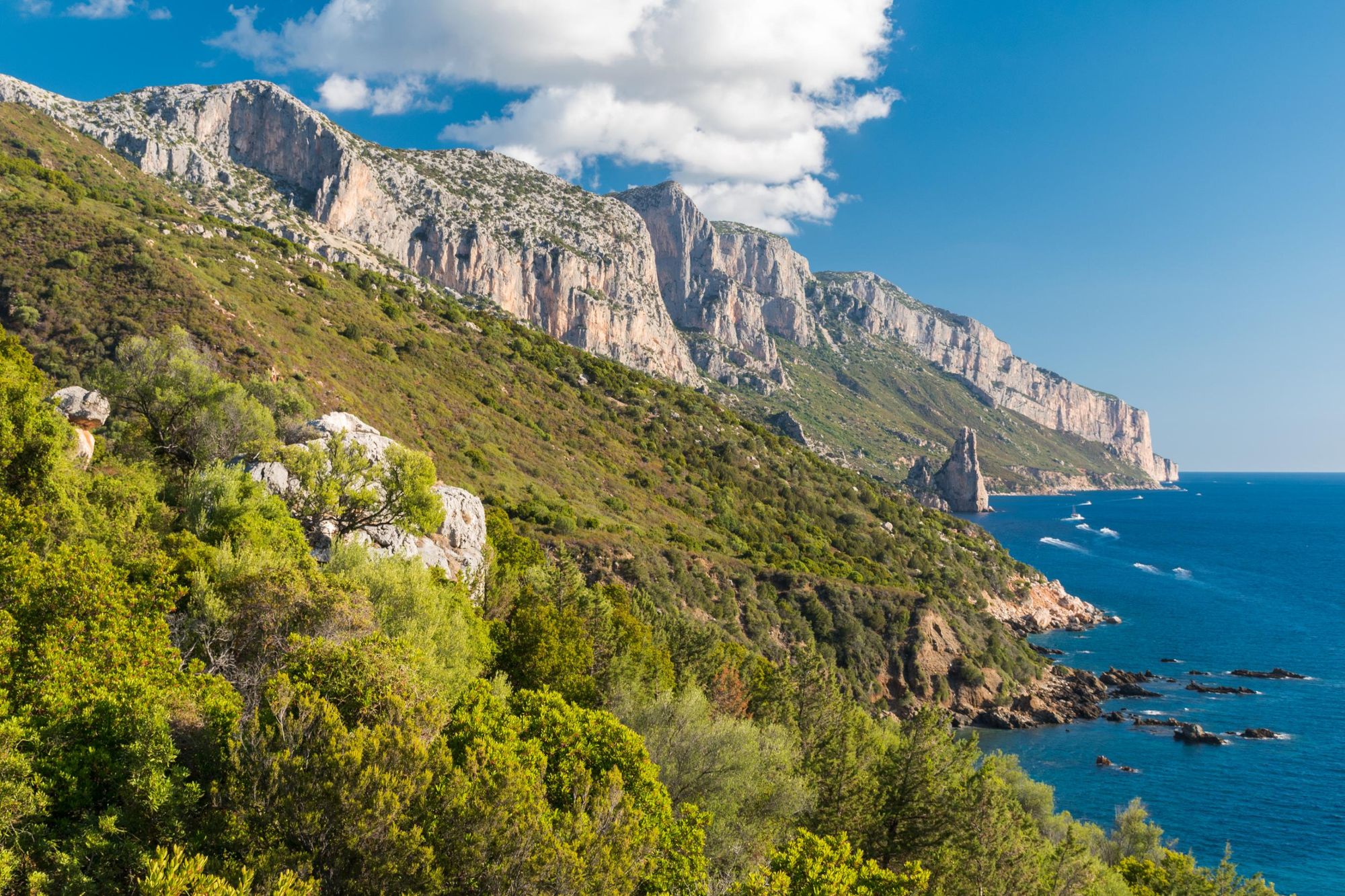
- Season: Spring
- Temperature: 25°C high, 14ºC low
- Time zone: GMT+2
- Currency: Euro
- Best for: A proper challenge in a beautiful place
For a lot of people, Sardinia means all-inclusive resorts and sun loungers. For a lot of other people - it increasingly does not. Not only is this beautiful island steeped in culture, it's also a haven for mountaineering and hiking. Take the Selvaggio Blu - a 25 mile (40km) trail with 4,200m (13,779ft) of vertical gain, five abseils and two via ferratas which is often said to be one of the toughest routes in Europe.
This is a beautiful coastal trail, and it’s one that will really test you, from the technical climbs to the vertigo-inducing drops to the abseils and fitness demands. We wouldn’t advise doing this route in July or August, though, as it's simply too hot. Take it on in May and you'll be able to navigate the course in better conditions.
How to get there? Cagliari Elmas Airport is the largest airport on the island of Sardinia.
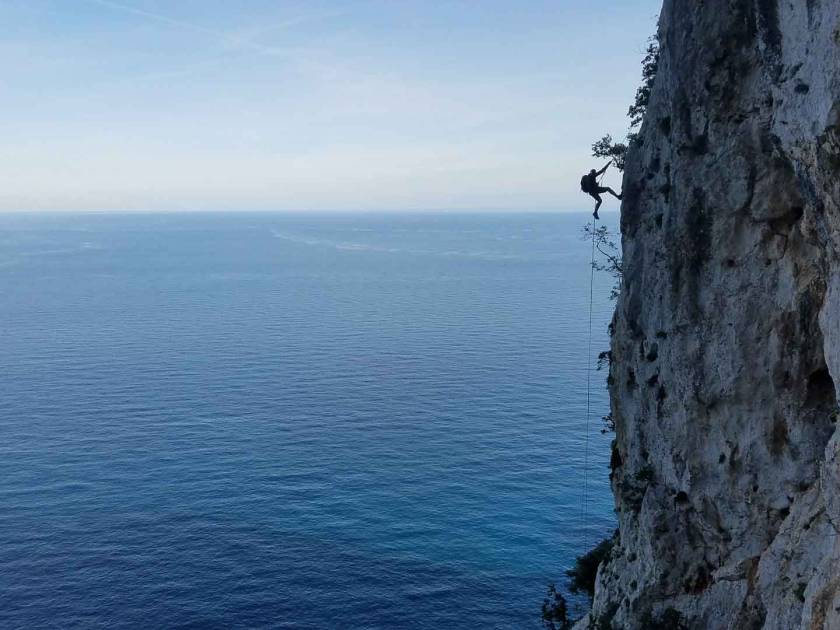
3. The Albanian Riviera, Albania
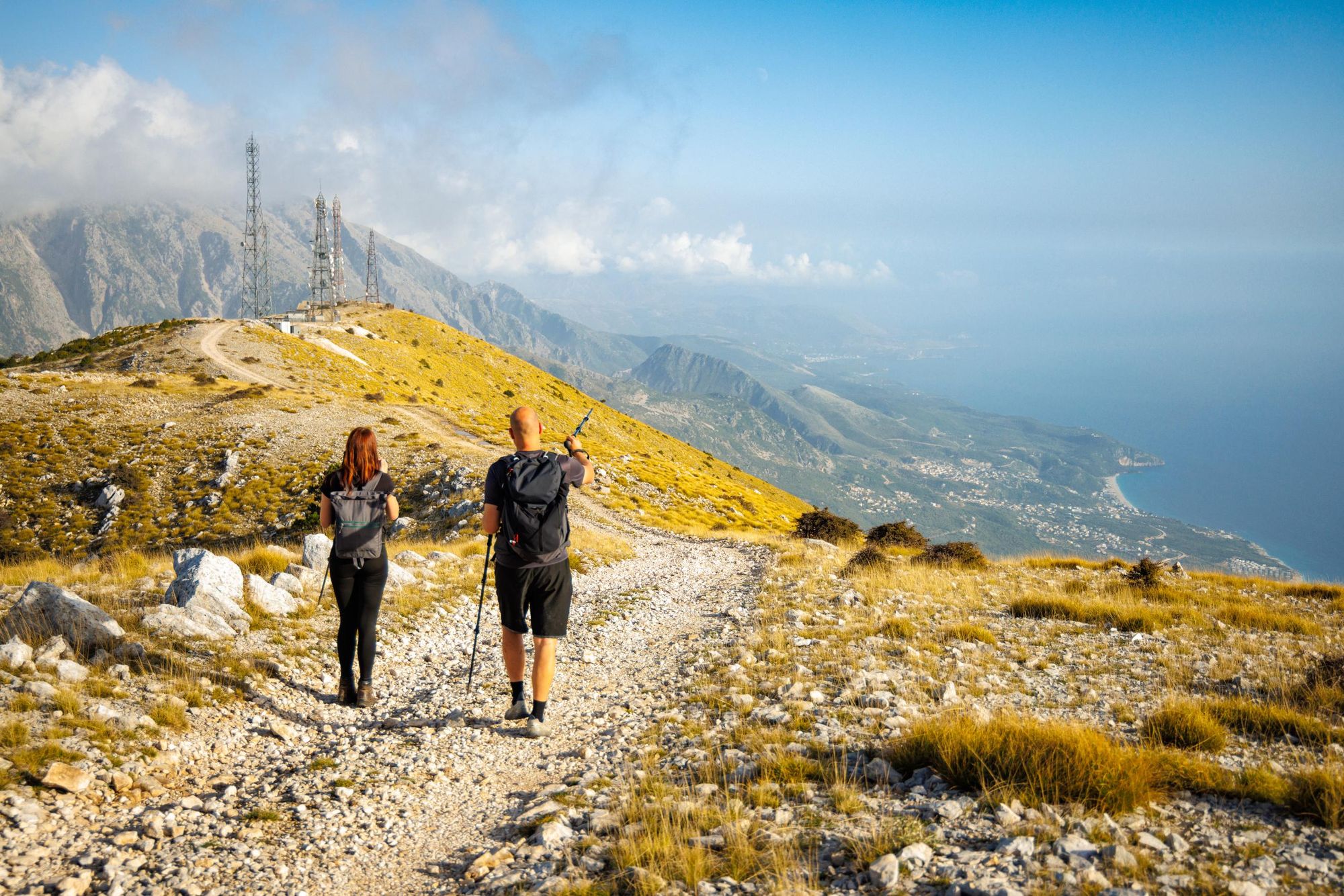
- Season: Spring
- Temperature: 25°C high, 14ºC low (for Dhërmi)
- Time zone: GMT+2
- Currency: Albanian Lek
- Best for: Mixing coasts and mountains
Anecdotally, Albania seems to be top of the travel list for a lot of budding adventures. It's the country on the lips of so many seasoned travellers at the moment, and the reasons for that are numerous. For starters, Albania is a destination which mixes huge mountains and high level ascents with coastal beauty. For another, it's a destination where your money goes a bit further.
Choose to hike in the Albanian Riviera and you'll find idyllic coastal beaches, beautiful forest and high-level hiking routes, and views out to Corfu across the Ionian Sea. You'll be walking past olive groves and ghost towns en route, and a dip in the ocean is never far away. Like we said, though, this area is becoming increasingly popular. Visit in May and you can avoid the worst of the summer crowds. “You only see the flashy, glitzy part of a beach resort in summertime,” says Ricardo Fahrig. “Here you get to see what really goes on without the crowds.”
How to get there? The closest international airport to the Albanian Riviera is in Tirana, the Albanian capital, and is 75 miles (121km) away. The Riviera is a four hour bus from here.

4. The Dalmatian Coast, Croatia
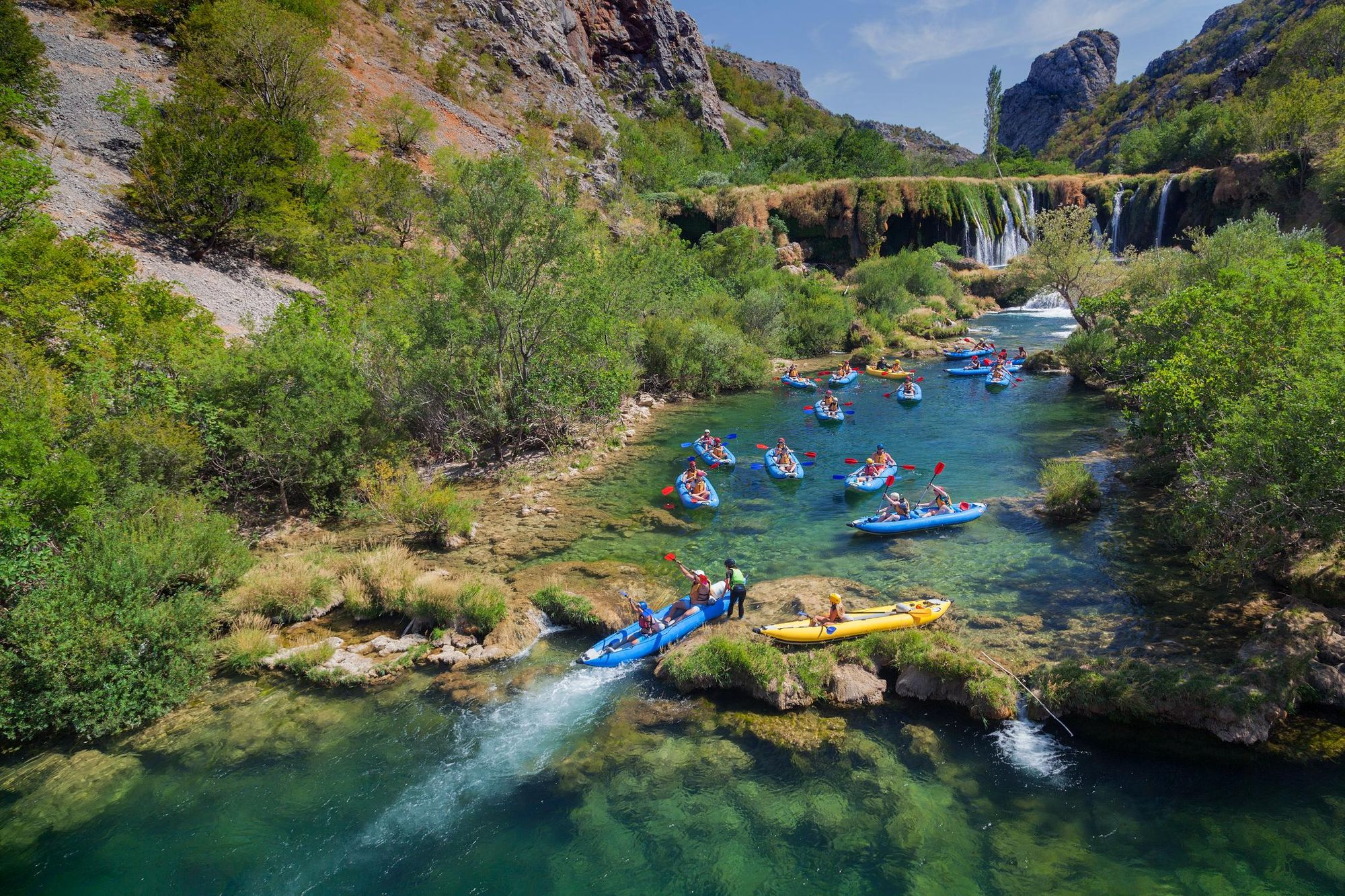
- Season: Spring
- Temperature: 24°C high, 15ºC low
- Time zone: GMT+2
- Currency: Euro
- Best for: Perfect paddling
The Dalmatian Coast is one of the four historical regions of Croatia. It sits on the west of the country and on the eastern edge of the Adriatic Sea.
The coast itself is narrow but long. It also happens to be covered by the Dinaric Alps - as well as being home to 79 islands and around 500 islets, just offshore - so it’s a real adventure hub. The most famous cities on the coastline are Split, Zadar, Šibenik and Dubrovnik - the latter of which, partly due to Game of Thrones-related tourism, is famously busy in the summer months. Visit in May and choose to visit the rivers in the mountainous interior as well as the coast and you'll see the full beauty of this wonderful coastline (and the historic cities along the way) in peace.
How to get there? The best international airports for the Dalmatian Coast are Split or Dubrovnik, naturally depending on where on the coast you are planning to visiting.
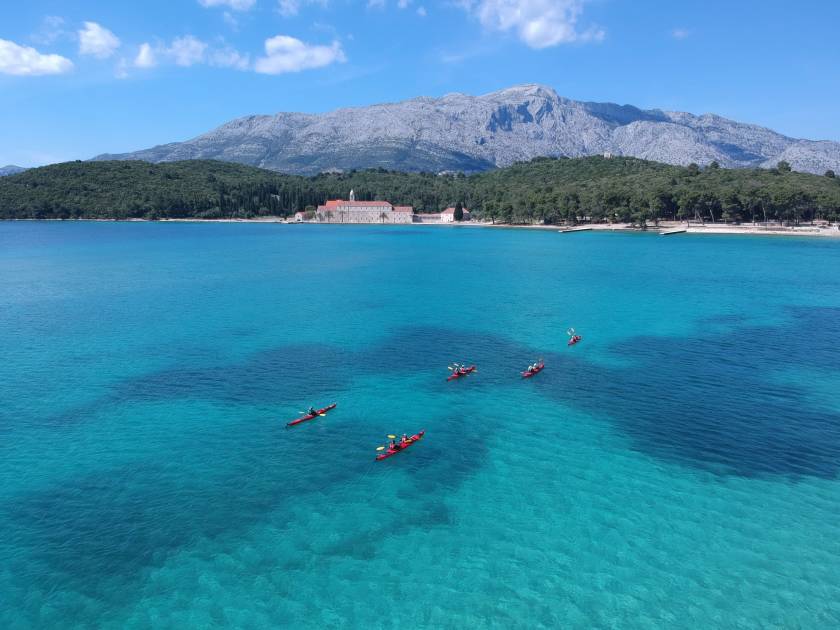
5. The Cairngorms, Scotland
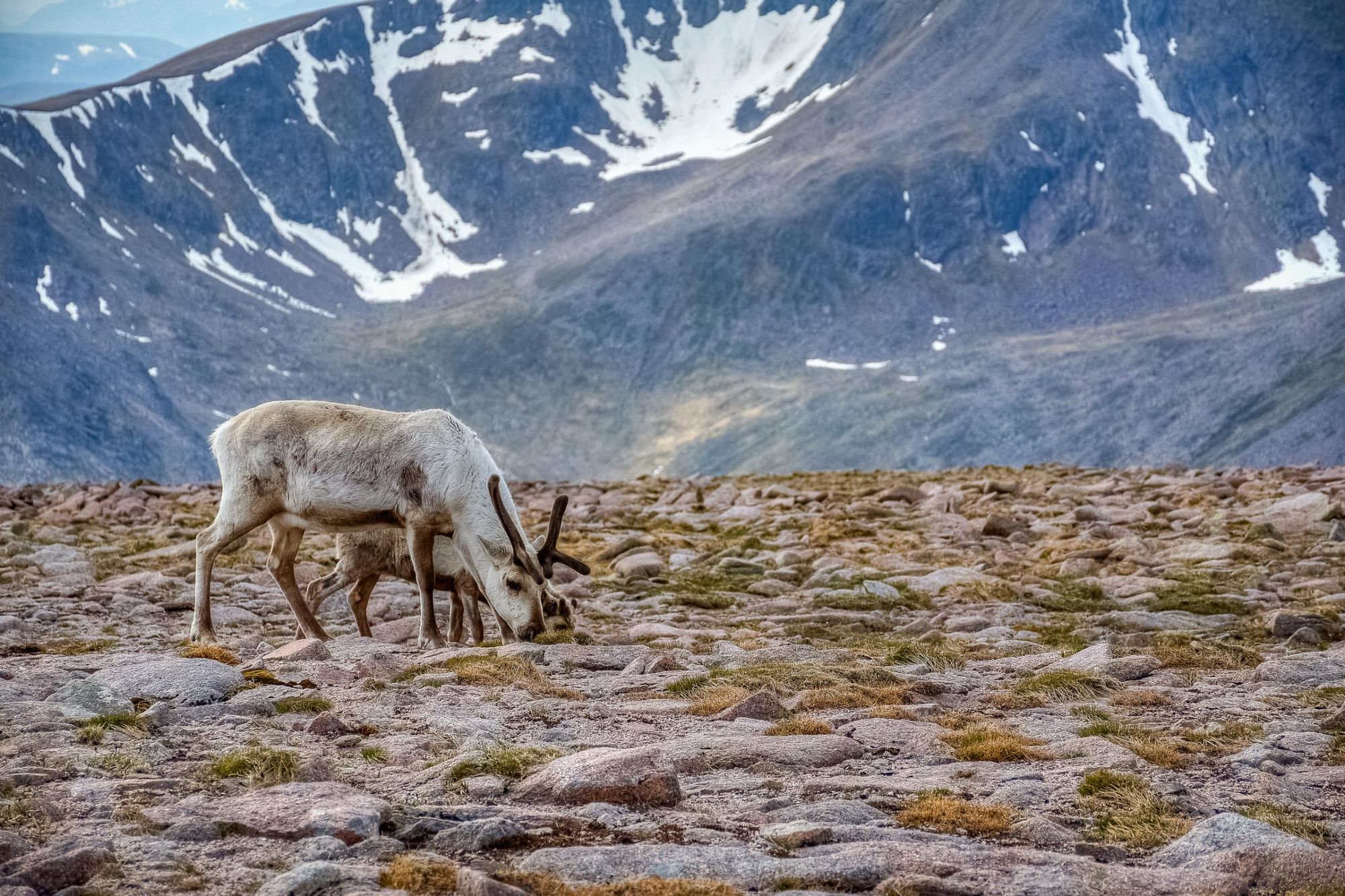
- Season: Spring
- Temperature: 14°C high, 4ºC low (for Aviemore)
- Time zone: GMT+1
- Currency: British Pound
- Best for: A Highland adventure
The Cairngorms are the adventurous heart of Scotland, being relatively easy to access from every Scottish city. Within the national park, you can do all sorts - from paddling the twists and turns of the river Spey to hiking up the UK’s second highest peak, Ben Macdui, which is 1,309m (4,296ft) tall.
I'm a regular hiker in Scotland. I live here and grew up here, and when I'm planning a long-distance trek, I usually aim for April, May or September. The weather is a little more erratic (though it always is), but crucially, the trails are less busy during these months, and there aren't so many midges buzzing around.
During May in these hills you can expect to find colourful flowers blooming in the lower reaches, while the higher areas may still be touched with patches of snow.
How to get there? The train station in Aviemore is well served by services from across the UK. The closest airports are Aberdeen and Inverness, though Edinburgh and Glasgow also work.
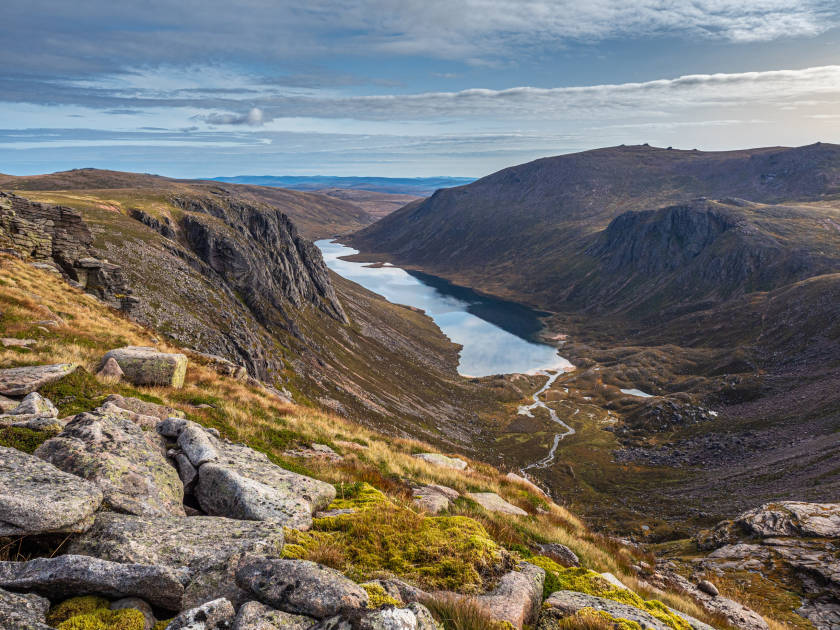
6. The Galapagos Islands, Ecuador
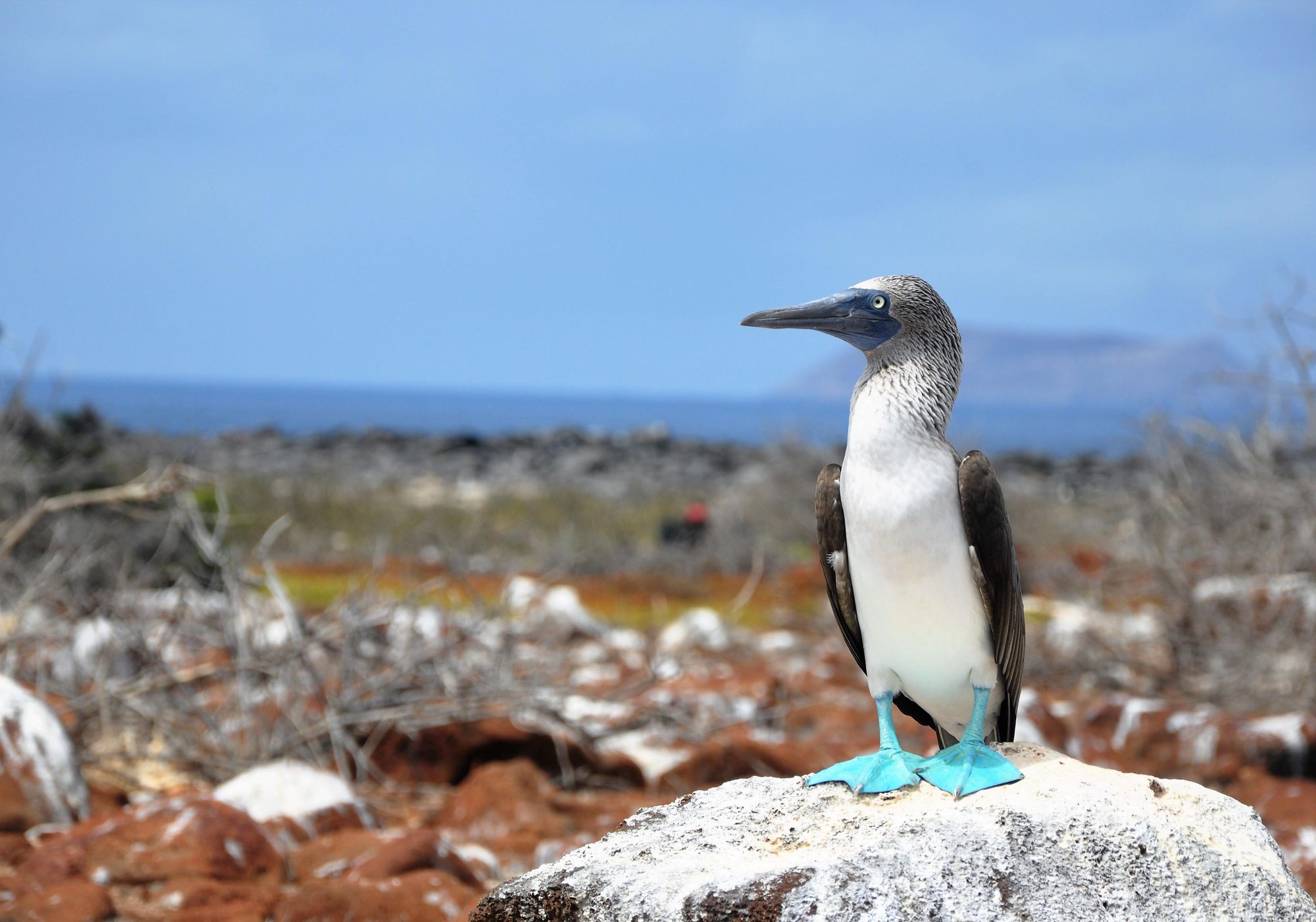
- Season: Wet to dry season
- Temperature: 29°C high, 20ºC low
- Time zone: GMT-5
- Currency: US Dollar
- Best for: Marine wildlife
There's no doubt that the Galapagos Islands are a year-round destination for wildlife lovers. “You’ll see wildlife even if you don’t do any specific activity,” says Henry Sisa, a Quito-based guide who has led tours in Galapagos.
The most famous residents are perhaps the Giant Tortoises, but if you go in May, you can see mating sea lions and new sea lion pups. It's also mating season for the blue-footed booby, and if you get lucky you might catch a blue-footed booby doing a courtship dance, in which they show off their bright feet. Elsewhere, sea turtles and land iguanas are hatching, and penguins will be dotted around the islands of the Galapagos.
How to get there? The Galapagos Islands are reached from Ecuador. Most people fly from the capital of Ecuador, Quito, to Baltra Island in the Galapagos. It’s a gorgeous flight.
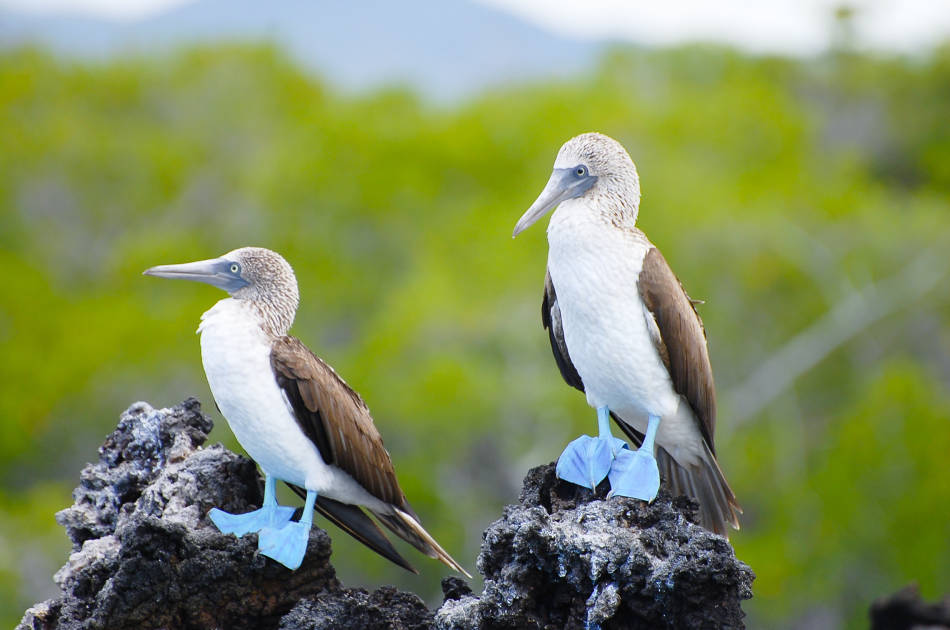
7. Machu Picchu, Peru
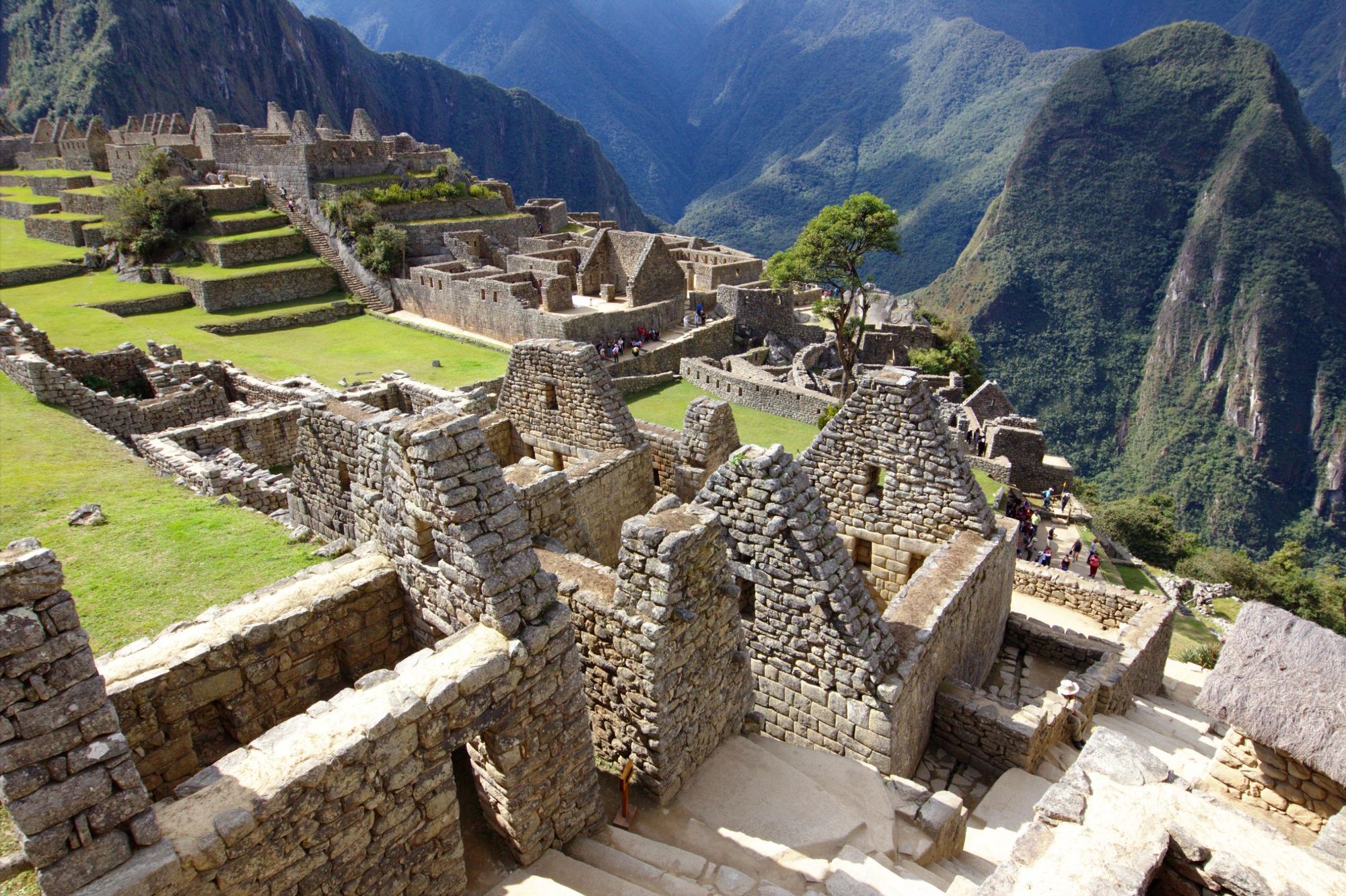
- Season: Dry season
- Temperature: 21°C high, 3ºC low
- Time zone: GMT-5
- Currency: Peruvian Sol
- Best for: Avoiding peak season at an iconic site
Machu Picchu is legendary, but this ancient Incan site, surrounded by mountain peaks, is also well known for being crowded.
Visit Machu Picchu in May and you'll be doing so at the start of the dry season. The weather is relatively stable and you have less chance of hiking in absolute downpours. It's also not as busy as the peak season, from July to August.
Naturally, the Inca Trail is the busiest route up to Machu Picchu at any time of year. We’d recommend looking at the Salkantay Trek instead, or if you’re really after a challenge, take a look at the trek to Choquequirao first.
How to get there? Cusco, the gateway city to Machu Picchu, is reached from the Peruvian capital of Lima. From Lima, you can fly to Jorge Chavez Airport or it’s an overnight bus.
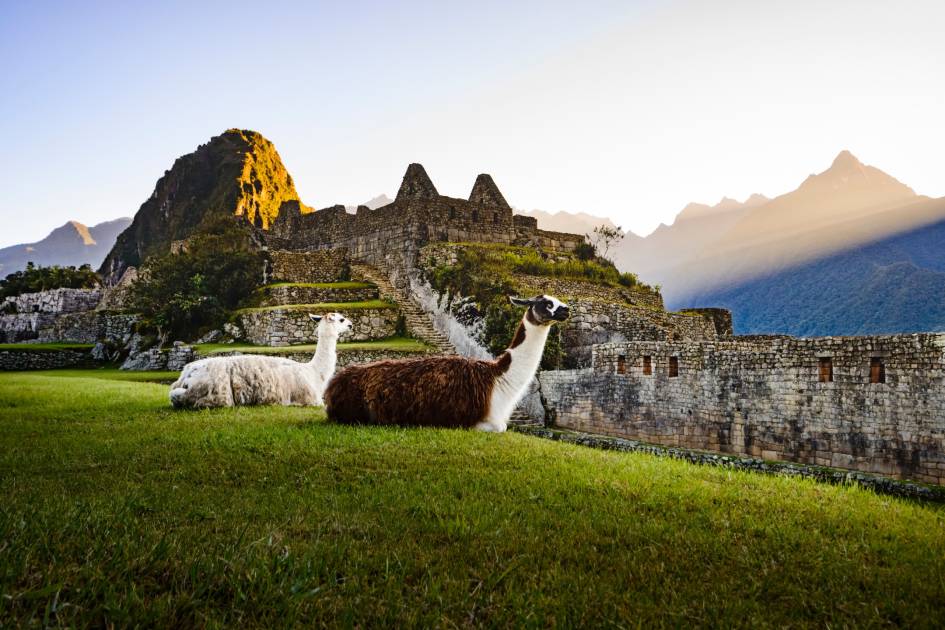
8. The Drakensberg Mountains, South Africa
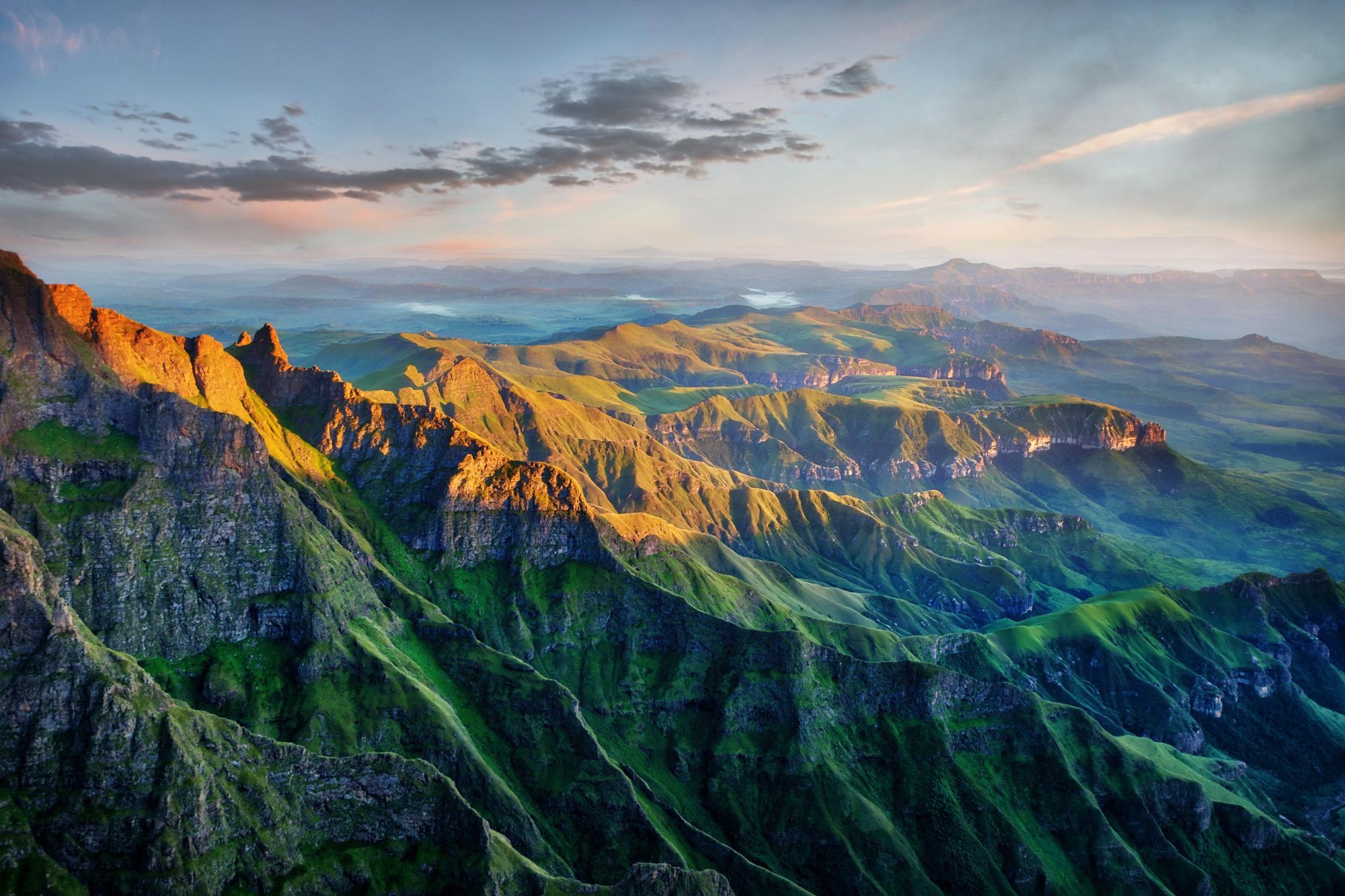
- Season: Autumn
- Temperature: 19°C high, 6ºC low
- Time zone: GMT+2
- Currency: South African Rand
- Best for: A demanding African adventure
The Drakensberg is a sight to behold; a great green wall, rising up over rolling hills and rivers and forming the natural border between South Africa and Lesotho. The hiking trails here are serious and strenuous. Some of the higher reaches are accessible only by chain ladders.
May in the Drakensberg is largely dry and mild. It's late autumn here, meaning that winter is just around the corner, and so things are beginning to cool town. This clear, crisp weather means that nights get cold, but trail visibility tends to be excellent. The grasslands are still gold with autumnal colours too, contrasting with the green mountains and providing a beautiful scene for a hike.
How to get there? The best way to reach the Drakensberg is to fly into King Shaka International Airport in Durban or the O.R. Tambo International Airport in Johannesburg.
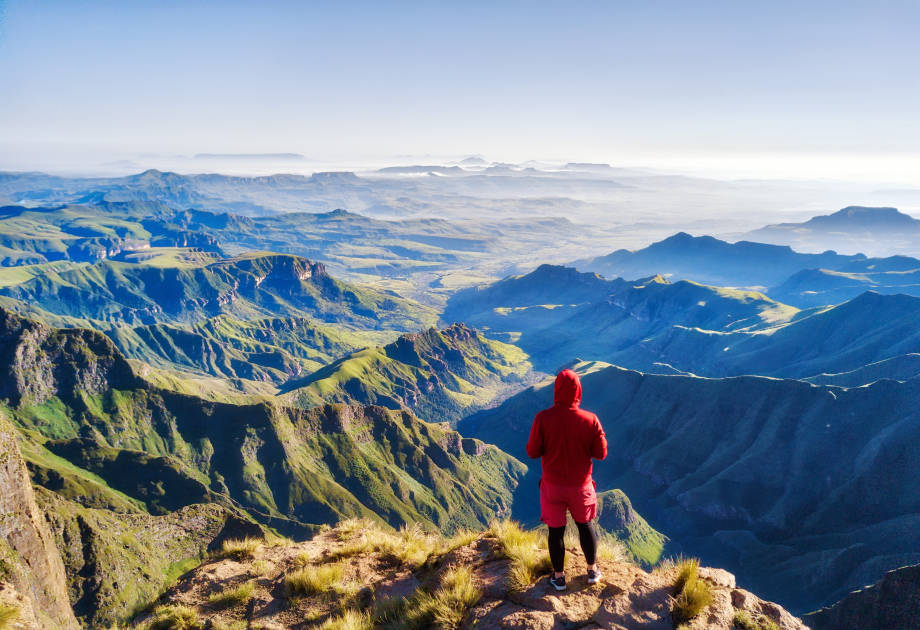
9. The Carpathian Mountains, Romania
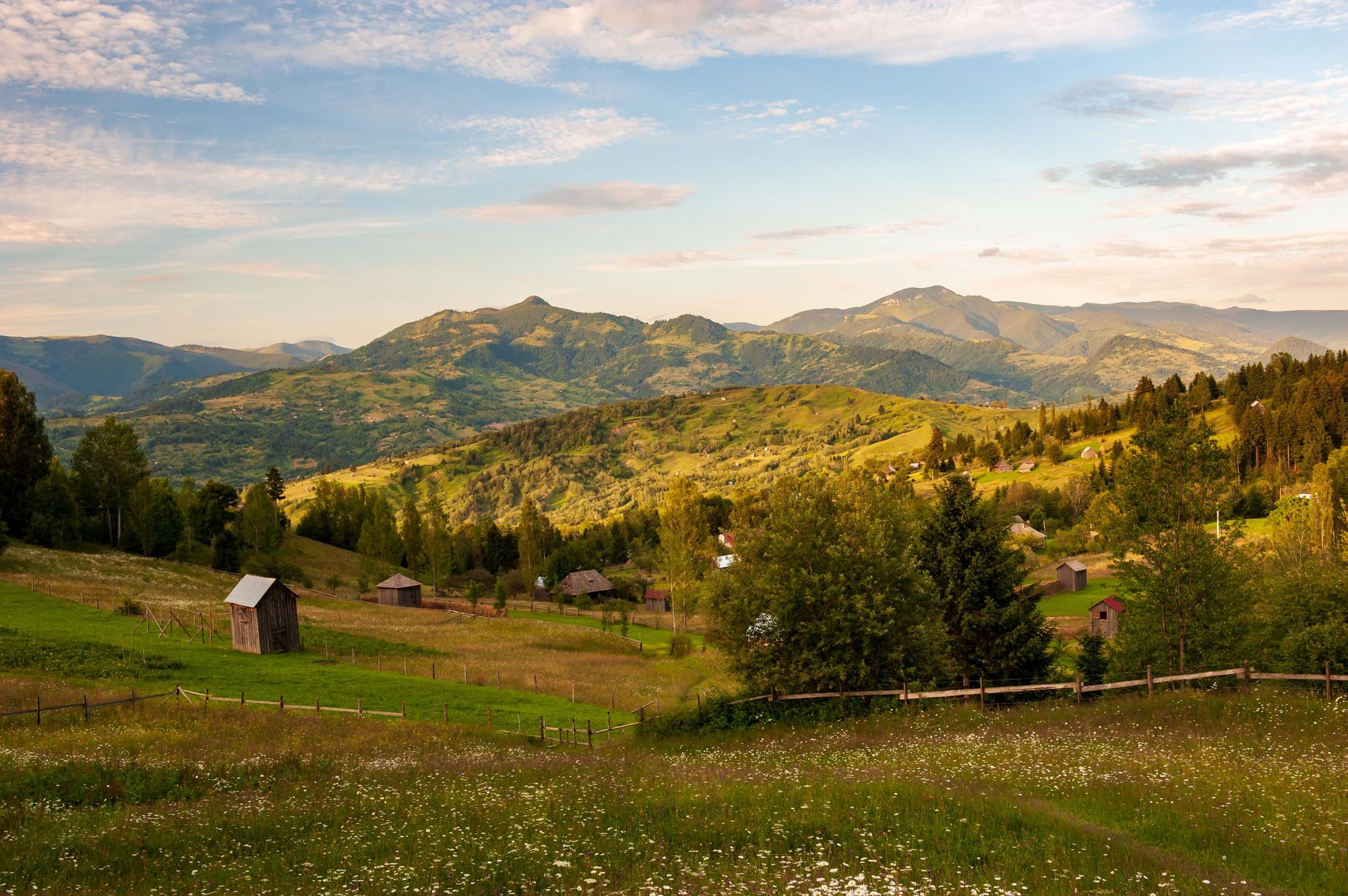
- Season: Spring
- Temperature: 20°C high, 4ºC low
- Time zone: GMT+2
- Currency: Romanian Leu (RON)
- Best for: Rewilding enthusiasts
Rewilding is bringing life back to both the mountains of the Carpathians in Romania, and to the towns that sit in the foothills. The reintroduction of bison in 2014 has helped to revitalise local communities where work was previously scarce, extending an olive branch to those who would like to stay and live in the area, but who were previously being pushed out to find work in cities.
The bison themselves have also been thriving. The grazing patterns of this keystone species have brought about the creation of mosaic landscapes. By eating the fastest growing trees first, bison give space and time for the slower growing plants and trees to come through, ensuring more variety, which benefits more animals and insects. Visit in May and you can track these bison as they move through a landscape settling into spring. Get lucky and you might just see some bears and wolves prowling around the forests as well.
How to get there? You’ll want to fly into Cluj. It’s around a four-hour drive from there.
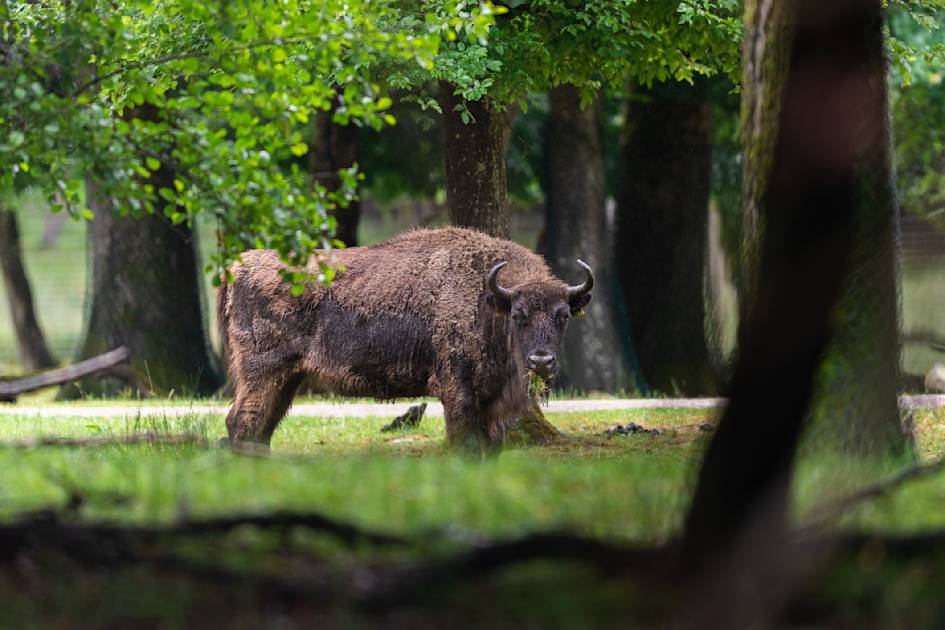
10. The Atlas Mountains, Morocco
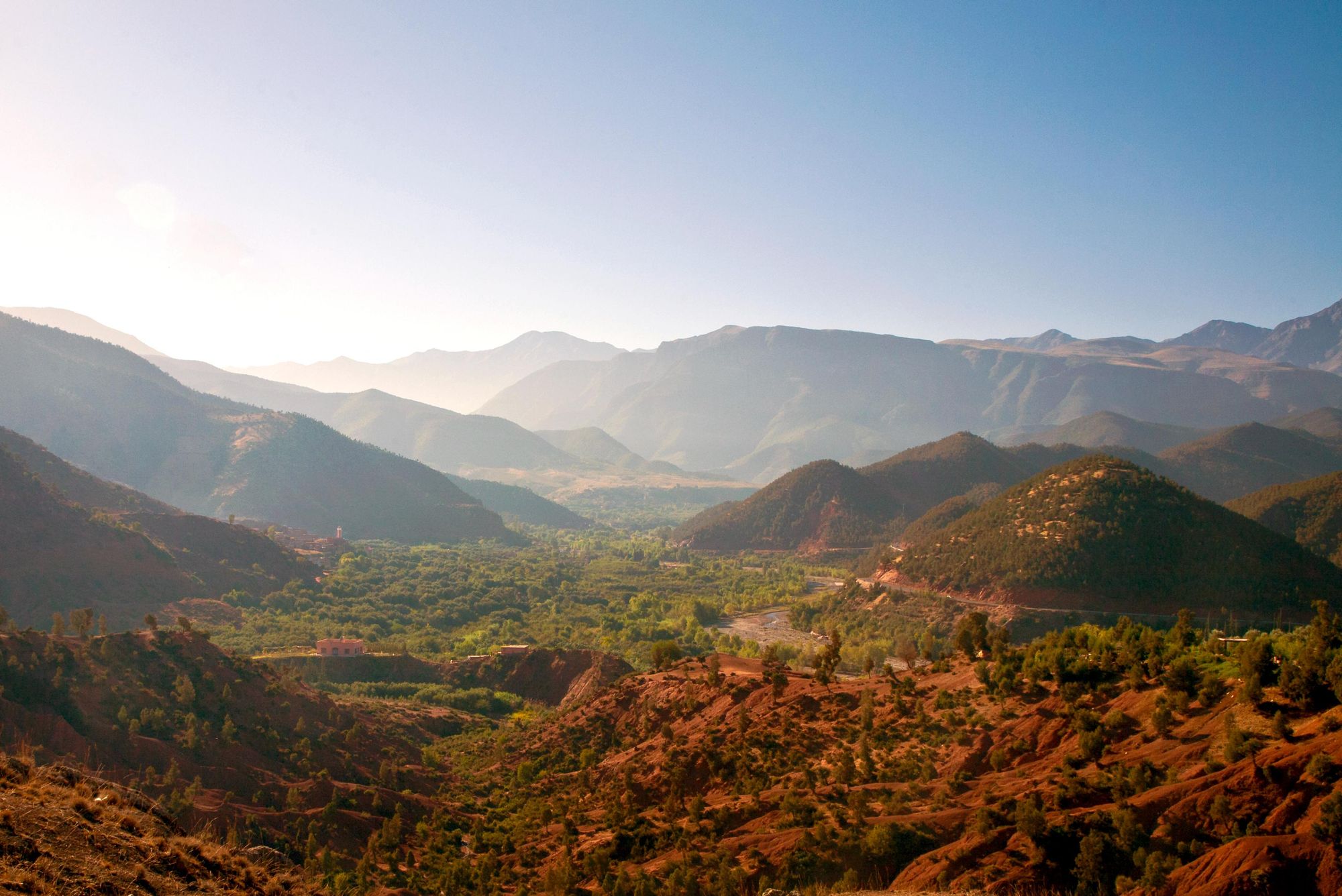
- Season: Spring
- Temperature: 29°C high, 16ºC low (for Imlil)
- Time zone: GMT+1
- Currency: Moroccan Dirham
- Best for: A big weekend adventure
Mount Toubkal 4,167m (13,665ft) is the highest peak in Morocco and in all of North Africa. Climbing it is a two-day journey, with the first day taking you up to the mountain refuge high on the mountain, and the second day taking you on to the summit (starting early, with the help of a headtorch) and then back down.
There can be snow on the high mountains in winter, while in the height of summer, conditions can get particularly hot. Visit in May and you'll find minimal rainfall, blooming wildflowers and green punctuating the desert valleys, and you'll find that things are more casual and relaxed than in the busy heights of summer.
How to get there? Most people visiting the Atlas Mountains first fly into Marrakech Airport.
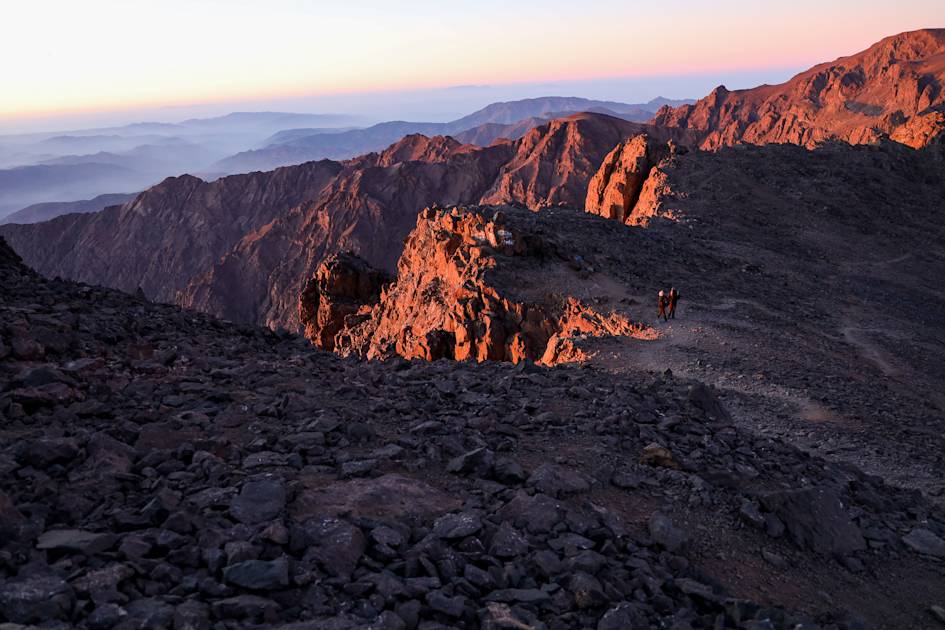
11. Etosha National Park, Namibia
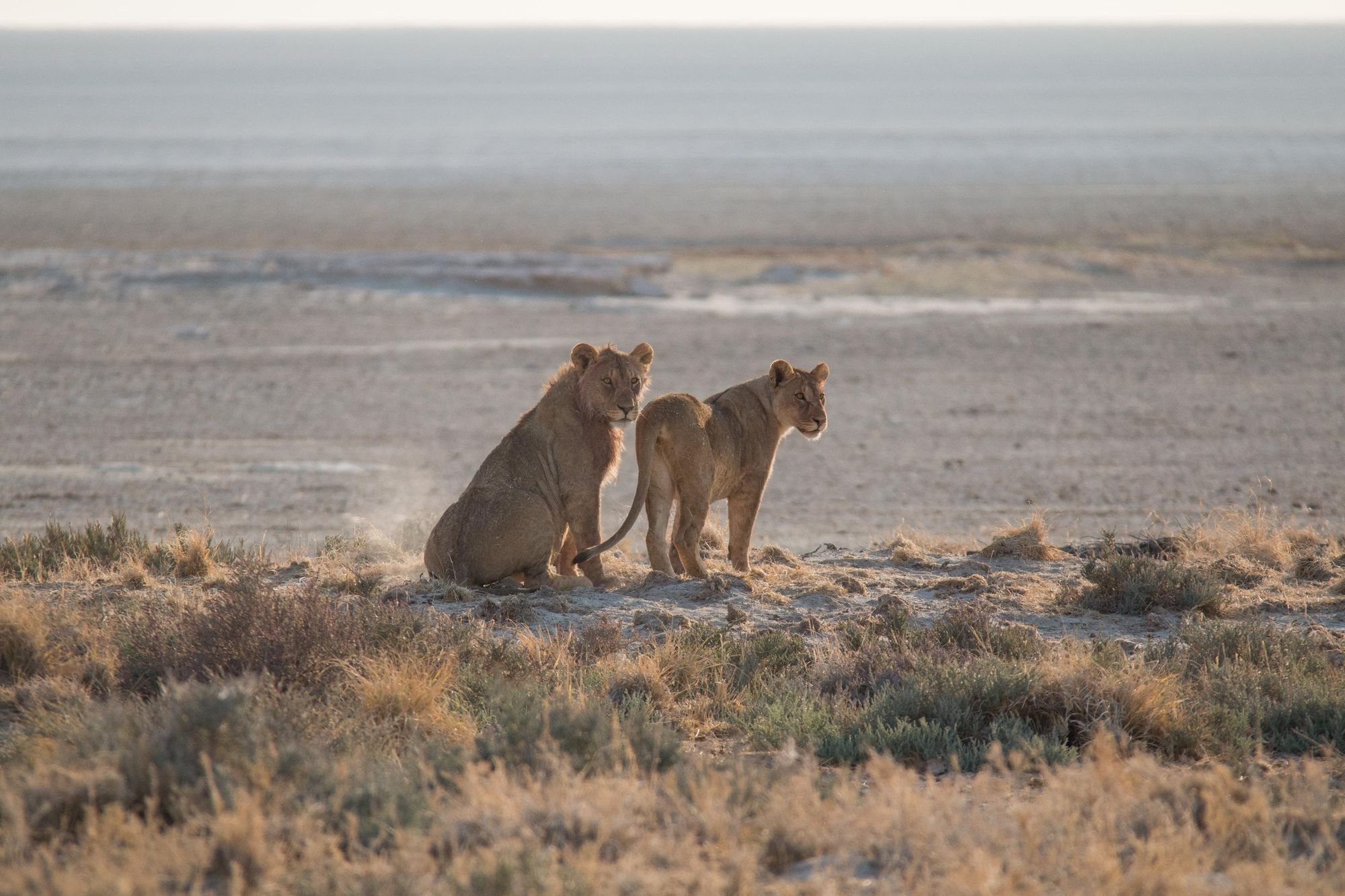
- Season: Rainy to dry season
- Temperature: 30°C high, 14ºC low
- Time zone: GMT+2
- Currency: Namibian Dollar
- Best for: Primetime animal watching
Visiting Etosha National Park is all about wildlife watching and safari, and in May, as the dry season starts, it's an ideal time to visit. Water holes become vital for wildlife at this time, and so by watching water holes, you can see a whole host of animals - including lions, leopards, elephants, giraffes, cheetahs, hyenas, rhinos, zebras and so much more. There's also less people here than in summer, too.
How to get there? Windhoek International Airport is the gateway to adventures in Namibia.

12. The National Parks of Western USA

- Season: Spring
- Temperature: 31°C high, 13ºC low (for Moab)
- Time zone: GMT-6
- Currency: US Dollar
- Best for: Tree lovers
Sequoia National Park is connected to Kings Canyon National Park, and the two are often explored together. The big attraction is the massive sequoia trees.
"It’s really hard to envision just how magical these trees are until you're face to face with on," says guide Ryan Romito. "The Giant Forest, it's called, is just filled with them. There’s a whole network of trails that weave in and out of each other throughout those sequoia trees."
Visit in May and you'll have pleasant weather and active wildlife in amongst all those trees - from deer and bears to to birds like scrub jays, goldfinch and acorn woodpeckers. Check out our guide to the best hikes in the Sequoia National Park.
How to get there? Las Vegas and San Francisco are major international airports servicing all the major hubs across North America and Europe, as well as Asia and Australasia. Don't get distracted now.
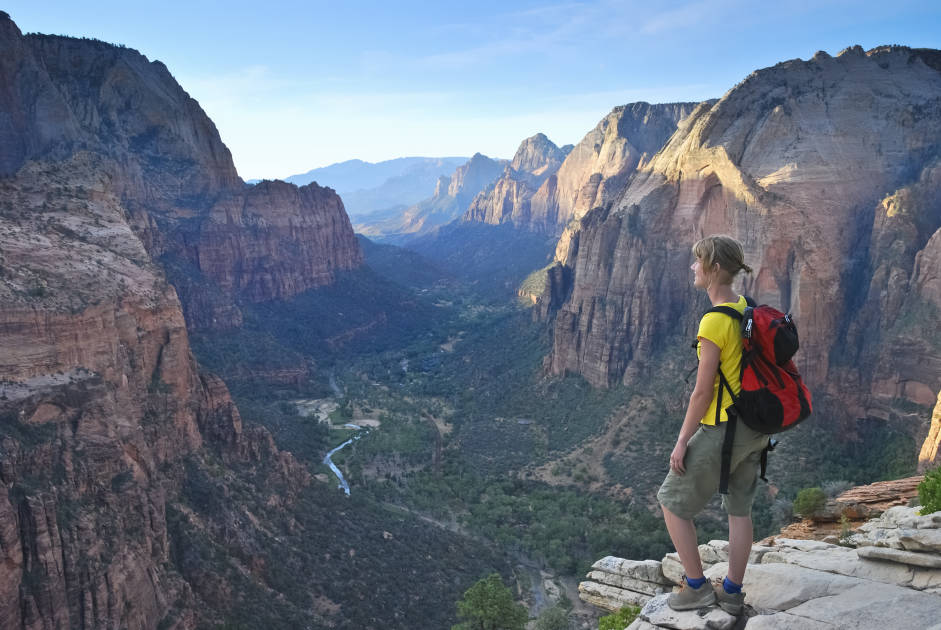
13. The Kumano Kodo, Japan
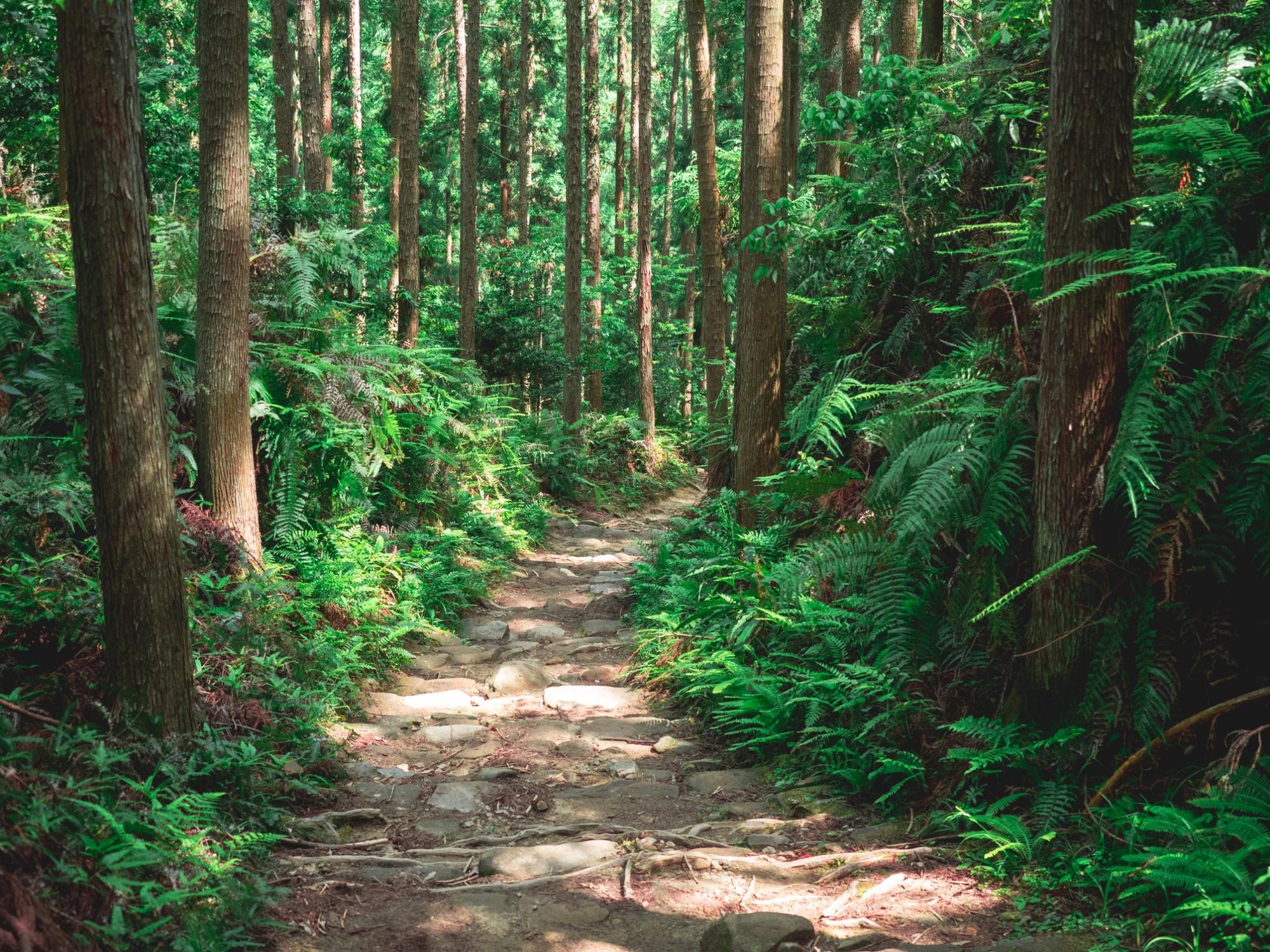
- Season: Spring
- Temperature: 22°C high, 15ºC low (for Osaka)
- Time zone: GMT+4
- Currency: Mauritian Rupee
- Best for: An immersion in spring forest
The Kumano Kodo is an 190-mile (370km) network of pilgrimage trails. All in all, it consists of five interconnected routes which run through the Kumano region of Japan, on the mountainous Kii Peninsula, south of Osaka.
These routes have been walked for over 1000 years, and they still are today. In fact, they’re the only pilgrimage routes in the world with a UNESCO World Heritage designation, other than the famous Camino de Santiago, which runs from Porto in Portugal to Santiago de Compostela in Spain. Walk the route in May and see how spring touches the cedar and cypress trees of the route, walking past wildflowers like azaleas, camellias and lilies which pop up along the route.
How to get there? Japan has an excellent rail service, which extends to the Kii Peninsula. The nearest international airport is the Kansai International, which is just outside of Osaka.
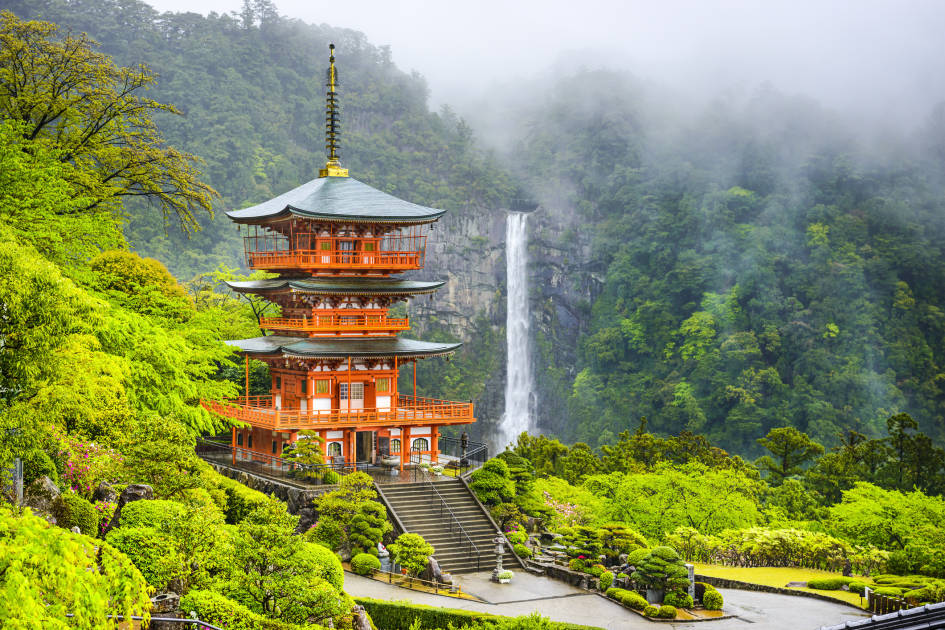
14. Bali, Indonesia
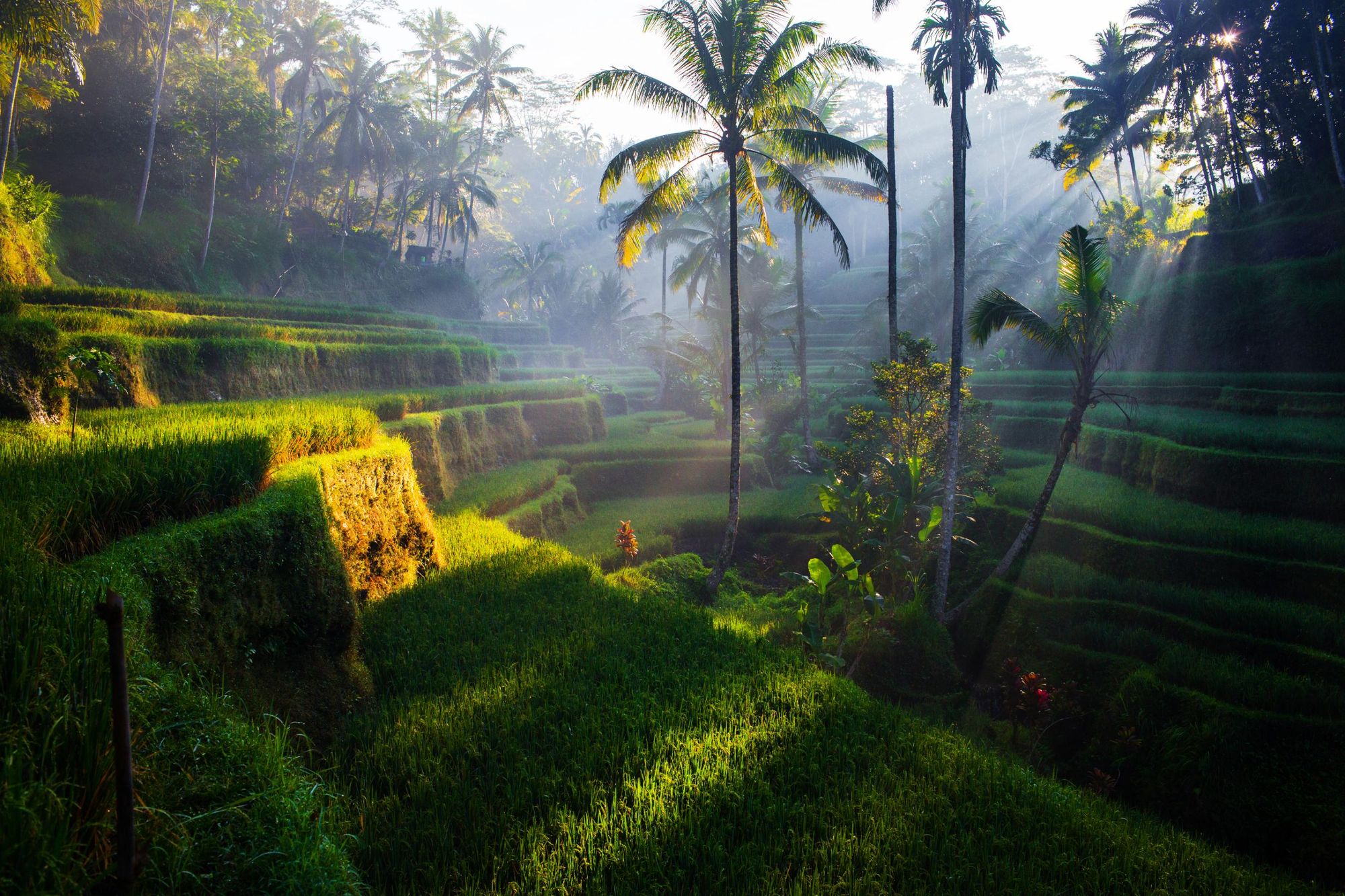
- Season: Dry season
- Temperature: 31°C high, 22ºC low
- Time zone: GMT+8
- Currency: Indonesian Rupiah
- Best for: A coast to coast in the sun
Many people think they know about all of what the Indonesian island of Bali has to offer. They tend to be wrong.
“Some people think that Bali is all about Kuta,” says Benny Onor, a local tourism expert involved in the creation of a new 62-mile (100km) coast-to-coast route across the island. “By going coast-to-coast, we can show it’s really not. We want to show the different landscapes that Bali has. The trail goes through dense jungle, through rice fields and plantations, past waterfalls and up mountains. In some places along this route, you won’t find another tourist there at all.”
May offers low humidity and minimal rainfall, making it an ideal time for hiking.
How to get there? The international airport on Bali is Ngurah Rai International Airport.
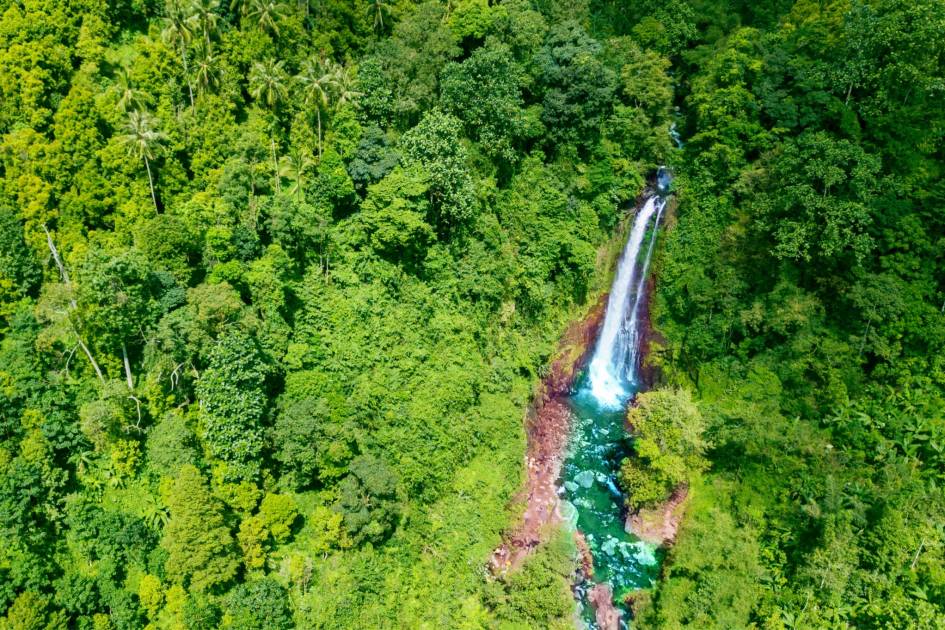
15. Sarawak, Borneo (Malaysia)
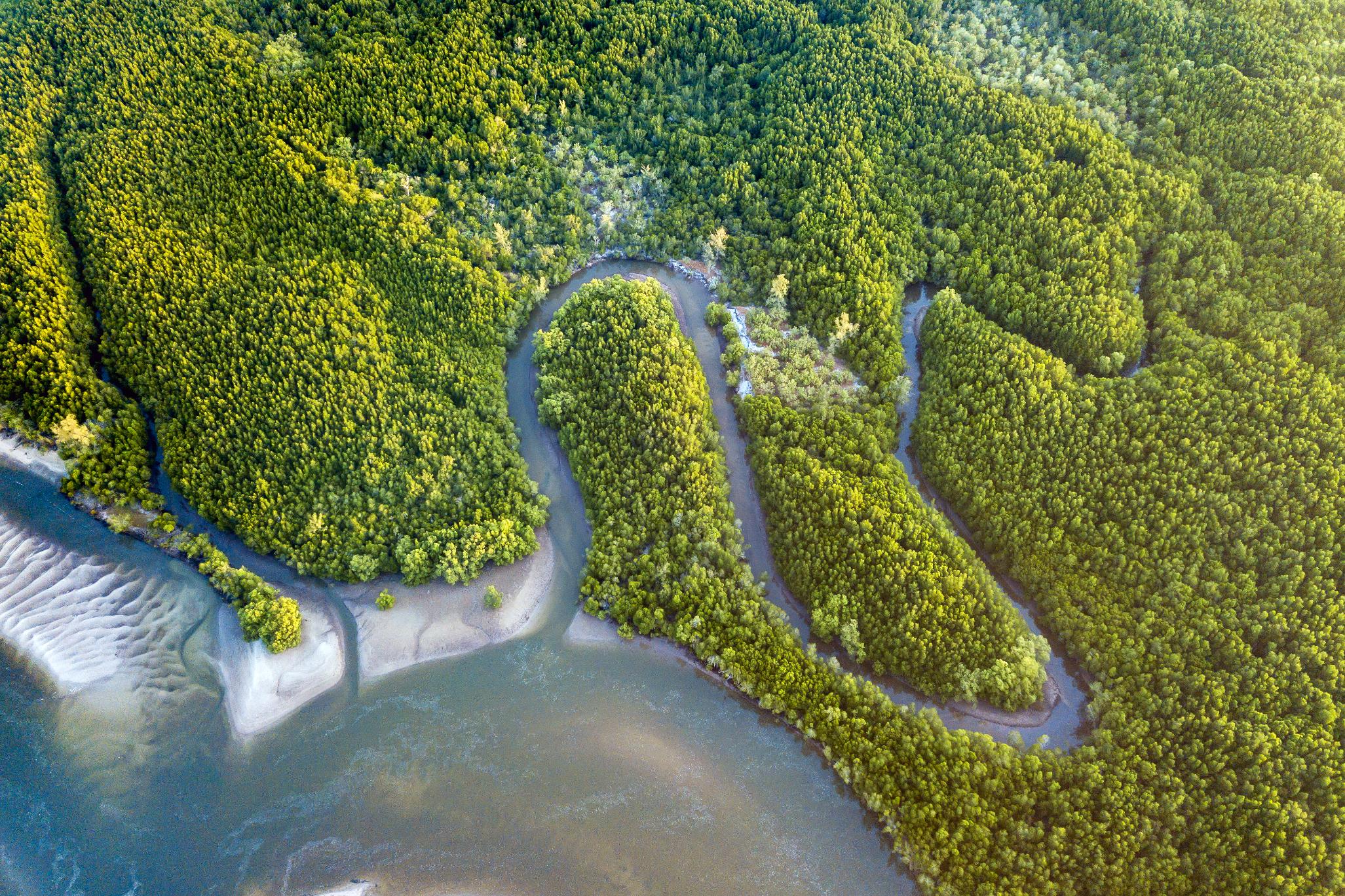
- Season: Dry season
- Temperature: 33°C high, 24ºC low (for Kuching)
- Time zone: GMT+8
- Currency: Malaysian Ringgit
- Best for: Rainforest wildlife spotting
Being the third largest island in the world, Borneo has a whole lot to offer. This is an island where you can (famously) see orangutans, see pygmy elephants and glimpse majestic, colourful hornbills taking off and soaring over ancient forests.
When most people visit, they head to Sabah. The more southerly region is called Sarawak, and it's also a dream destination. In Sarawak, you'll find white sandy beacehs, extensive wetland and mangroves, ancient rainforests and charismatic wildlife - plus, the eclectic city of Kuching is so much fun to explore.
Explore the limestone caves of Mulu National Park, or head to Bako National Park to see the proboscis monkeys; easily-identifiable by their large noses.
How to get there? To explore Sarawak, first fly to the Kuching International Airport in Borneo.

16. Dahar, Tunisia
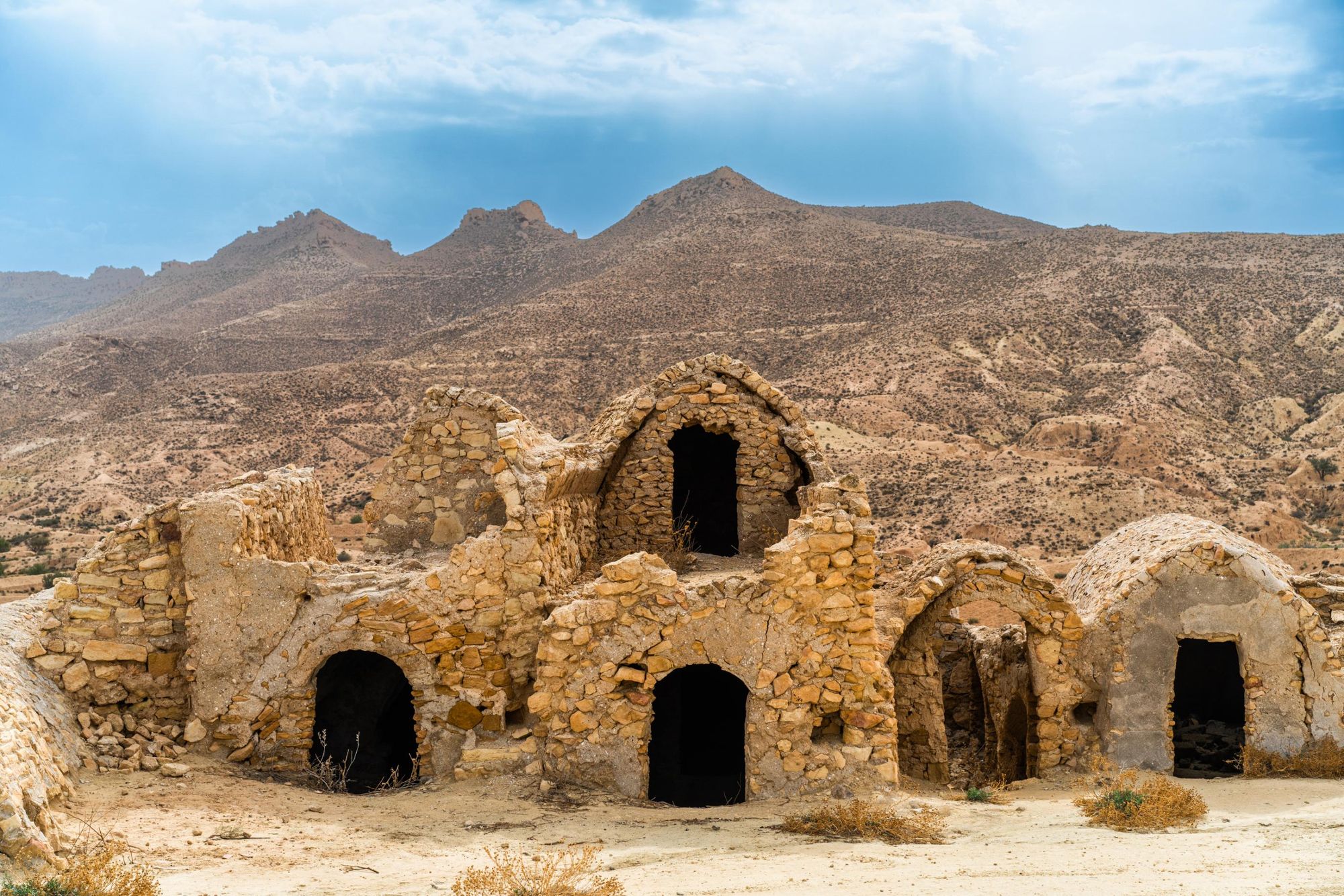
- Season: Spring
- Temperature: 26°C high, 15ºC low
- Time zone: GMT+1
- Currency: Tunisian Dinar
- Best for: An off-the-radar desert adventure
Tunisia is a country that has sun, sea and sand - but also so much more. “Tunisia is around the size of England, but the diversity of the landscape is really amazing," says destination expert Ben Azouz Houssem. "The south is extremely exotic, even for us Tunisians in the big cities of the north; it has oases, the Sahara Desert and the rocky mountains in the south east. It's really very well adapted for adventure."
The Great Dahar Crossing is the first long-distance trekking route in the country. It's 136.7 miles (220km) in total, divided into 12 day-long stages, and it'll take you through the remarkable Jebel Dahar. Think sun-baked plateaus, dotted with fig and olive trees, Star Wars filming locations and sandstone hills which hide ancient secrets; from abandoned villages to ancient rock paintings.
How to get there? Start your adventure by flying to the Enfidha-Hammamet International Airport.

17. The Jordan Trail, Jordan
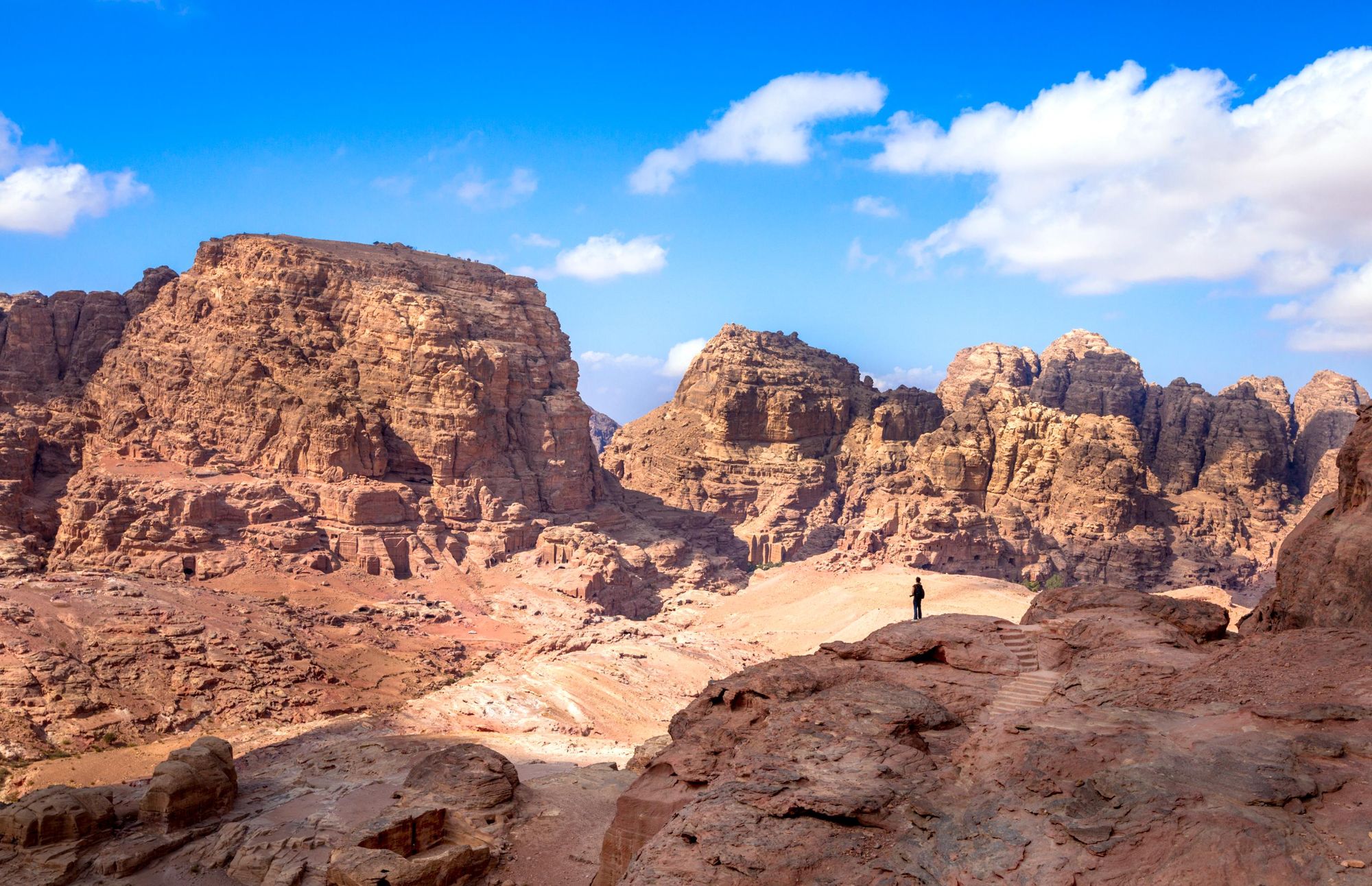
- Season: Spring
- Temperature: 29°C high, 13ºC low (for Petra)
- Time zone: GMT+3
- Currency: Jordanian Dinar
- Best for: Exploring an ancient site in a new way
“Some people who live just an hour away from Petra never get to see the benefit of the travellers who come through the area,” says Ayman Abd Alkareem, one of the founders of the Jordan Trail, a 420-mile (675km) route created to spread the wealth of tourism in Jordan. “These trails help to stretch the season.”
The trail stretches from Umm Qais, in the north of Jordan, all the way to the Red Sea and Aqaba in the south. Along the way it takes in Petra, but it also stops in small villages, and visits the red, otherwordly desert of Wadi Rum.
How to get there? The capital of Jordan, Amman, and its airport are the gateway to Jordan.
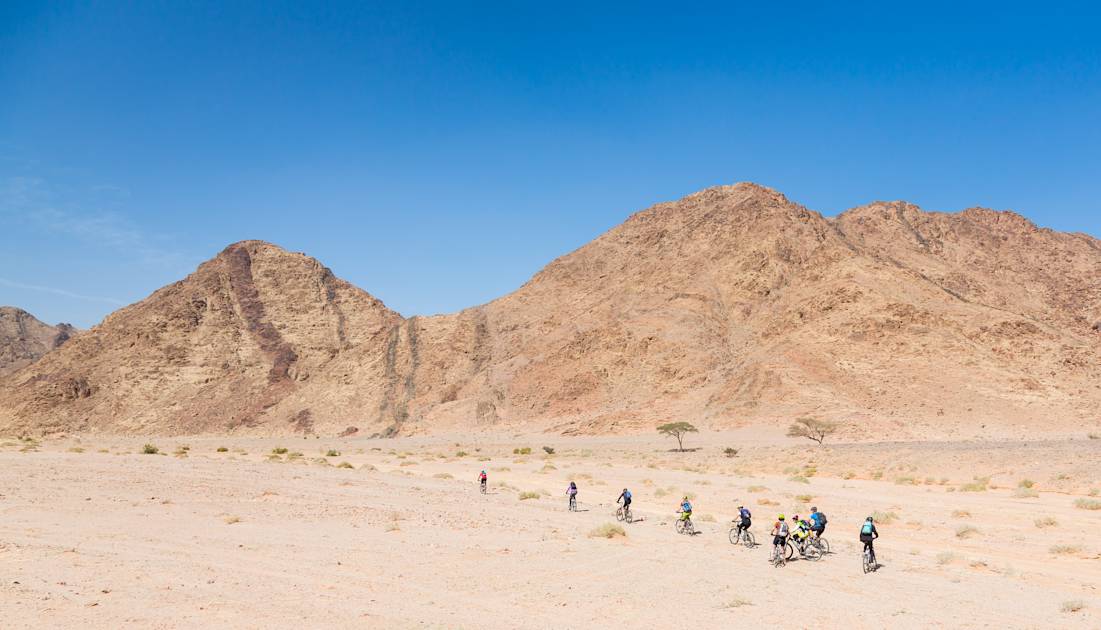
18. The Himalayas, Nepal
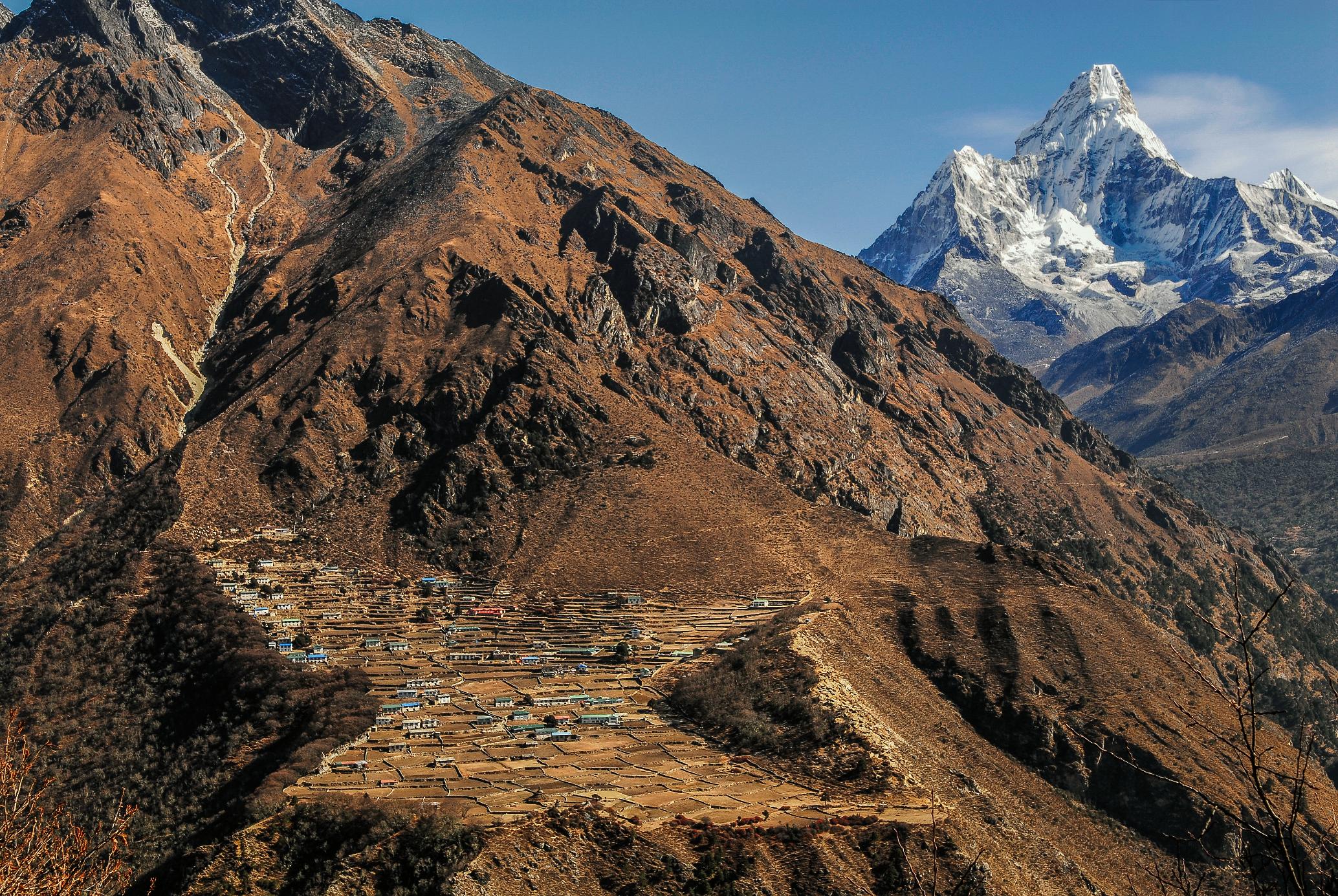
- Season: Spring
- Temperature: 15°C high, 4ºC low (for Lukla)
- Time zone: GMT+5:45
- Currency: Nepalese Rupee
- Best for: A full Himalayan experience
Nepal remains the ultimate destination for hiking and climbing. This is the country that was basically designed for it - home to the highest mountains in the world, including Mount Everest, and to the hikes to, up and around those huge peaks.
The walks from Everest Base Camp to Lukla is one of the most iconic long-distance treks in the world. As is the Annapurna Circuit, which loops around the Annapurna massif. A lesser known hike is the one up Mera Peak, which is one of the highest summits in the Himalayas of Nepal that you can ascend without mountaineering experience. It'll take you right up above 6476m (21,246ft).
How to get there? You’ll first need to get to Kathmandu. If it’s the Everest Base Camp trek that you’re doing, you’ll then want to fly on to the famous Tenzing-Hillary airport in Lukla.
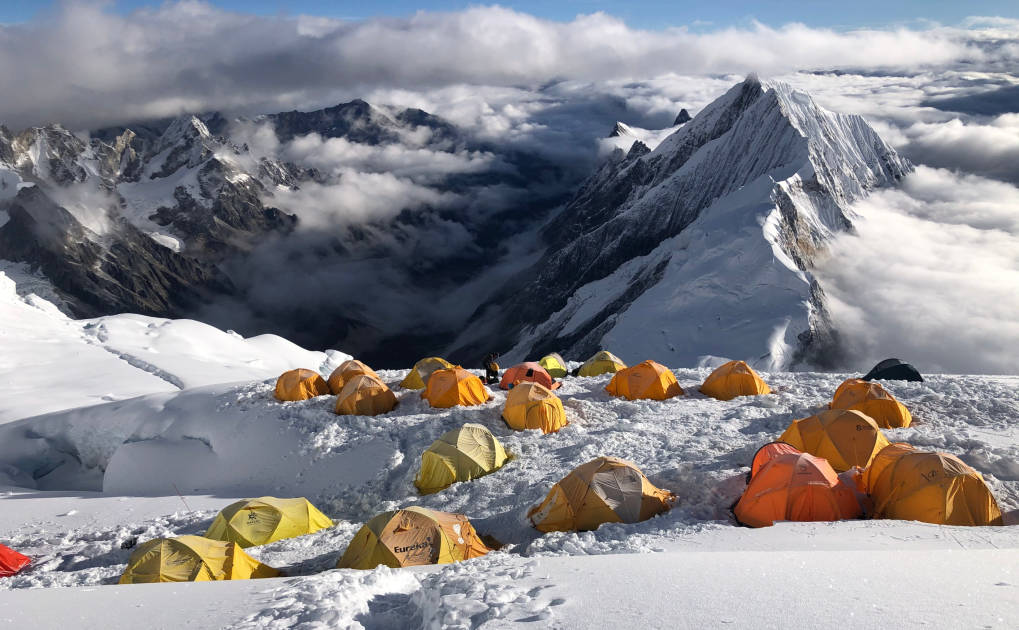
19. Cao Bang, Vietnam
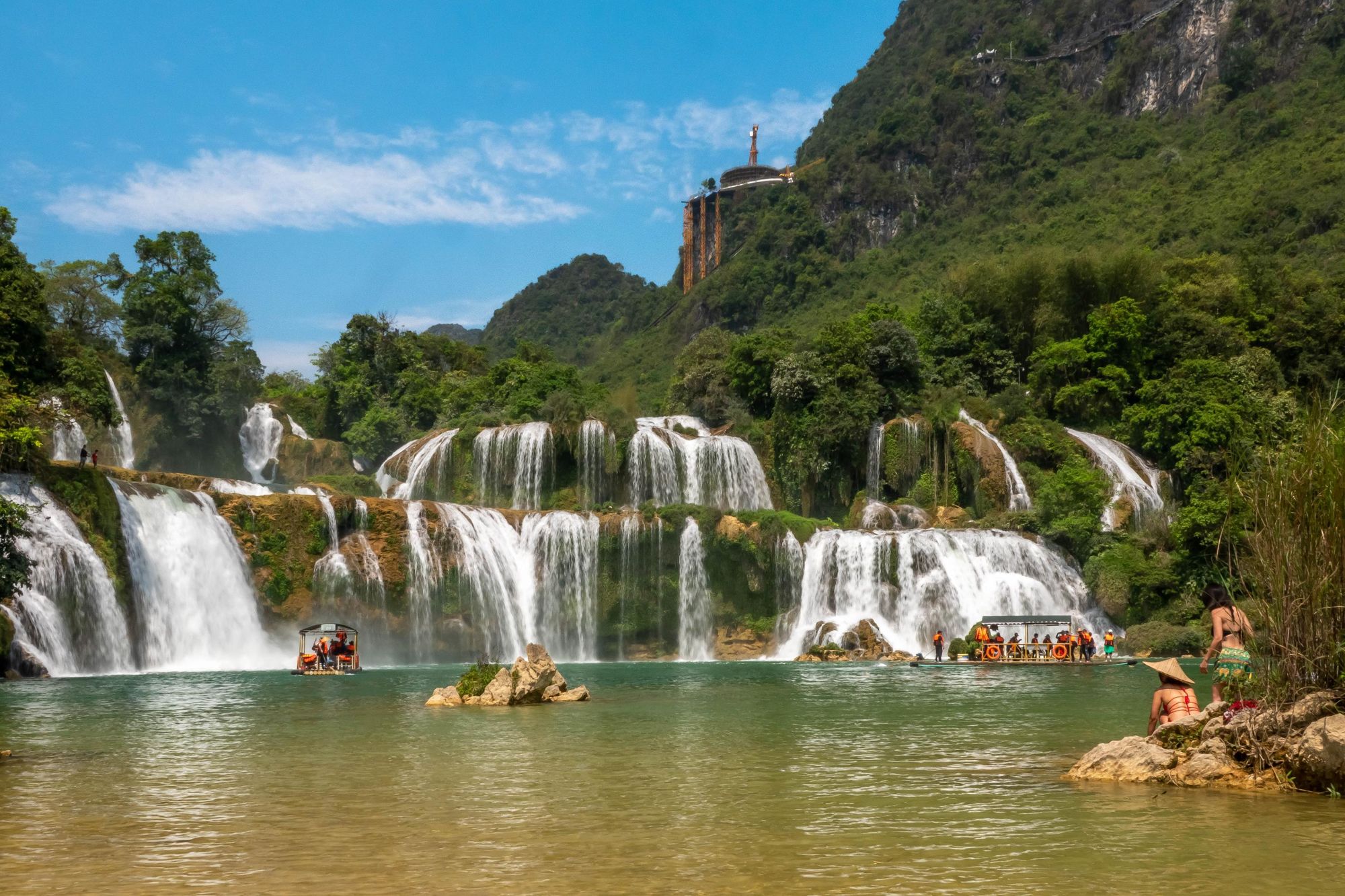
- Season: Spring/Summer
- Temperature: 30°C high, 22ºC low
- Time zone: GMT+7
- Currency: Vietnam Dong
- Best for:
It's not hard to find a remarkable landscape in the Cao Bang district of Northern Vietnam. This is a place where waterfalls tip into idyllic lagoons which are backdropped by both mountains and more waterfalls. This is a place where huge, green monoliths rise out of the earth and tower over landscapes - and where paddling and hiking trails weave through all of this. Visit Thung Mountain and you'll find one such area. Visit the Bản Giốc waterfall for another.
In May, the early summer climate means the weather is warm without being roasting, and the skies tend to be clear.
How to get there? Fly to Hanoi and then you can grab a five hour bus to Cao Bang.

20. Go Trekking on Remote Trails in Madagascar

- Season: Wet to dry season
- Temperature: 24°C high, 13ºC low
- Time zone: GMT+3
- Currency: Malagasy Ariary
- Best for: Lemurs, lemurs and more lemurs
Madagascar is famous for many things, but one stands out to visitors above all of them - lemurs. In total, there are over 100 species of lemur on Madagascar, the most famous being the ring-tailed lemur (pictured above).
This is an ideal destination for combining a wildlife-watching trip with a big hiking adventure. Scramble up to the summit of Pic Boby, which at 2,658m (8,809ft) is the second highest mountain on the island. Tread and wild camp in the Isalo and Andringitra National Parks and visit the community-run nature reserve of Anja, where ring-tailed lemurs of both widely present and thriving.
May is a shoulder month here; and the start of the dry season. So, expect less visitors and warming conditions - with all the greenery of spring.
How to get there? To reach Madagascar fly into Ivato International Airport, Antananarivo.
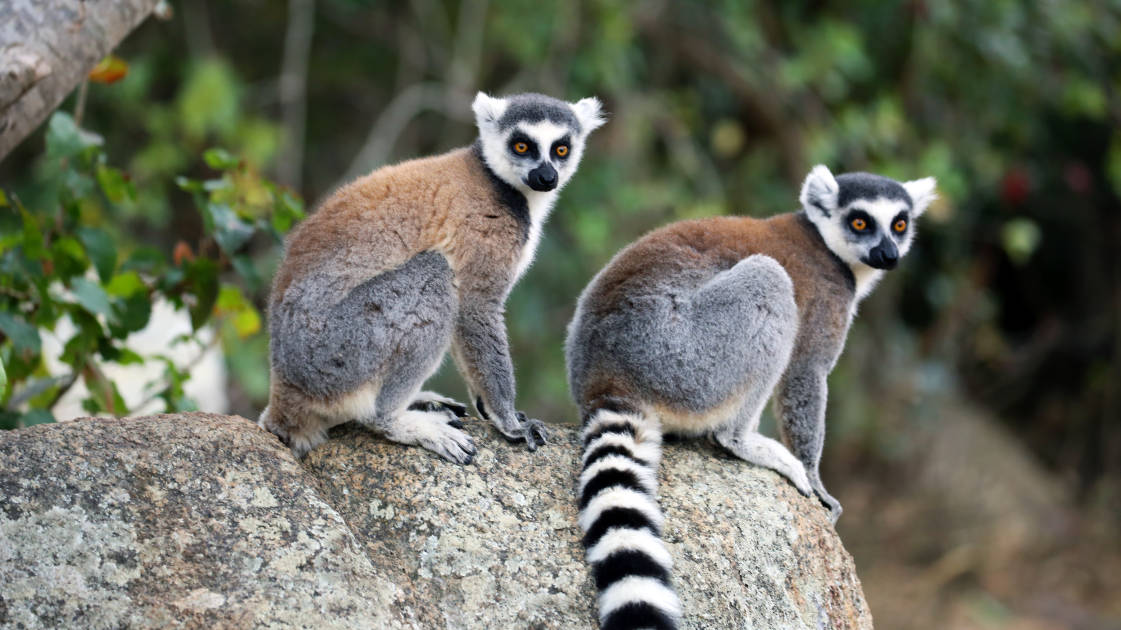
Inspired? Check out our full range of adventure holidays departing in May now!

